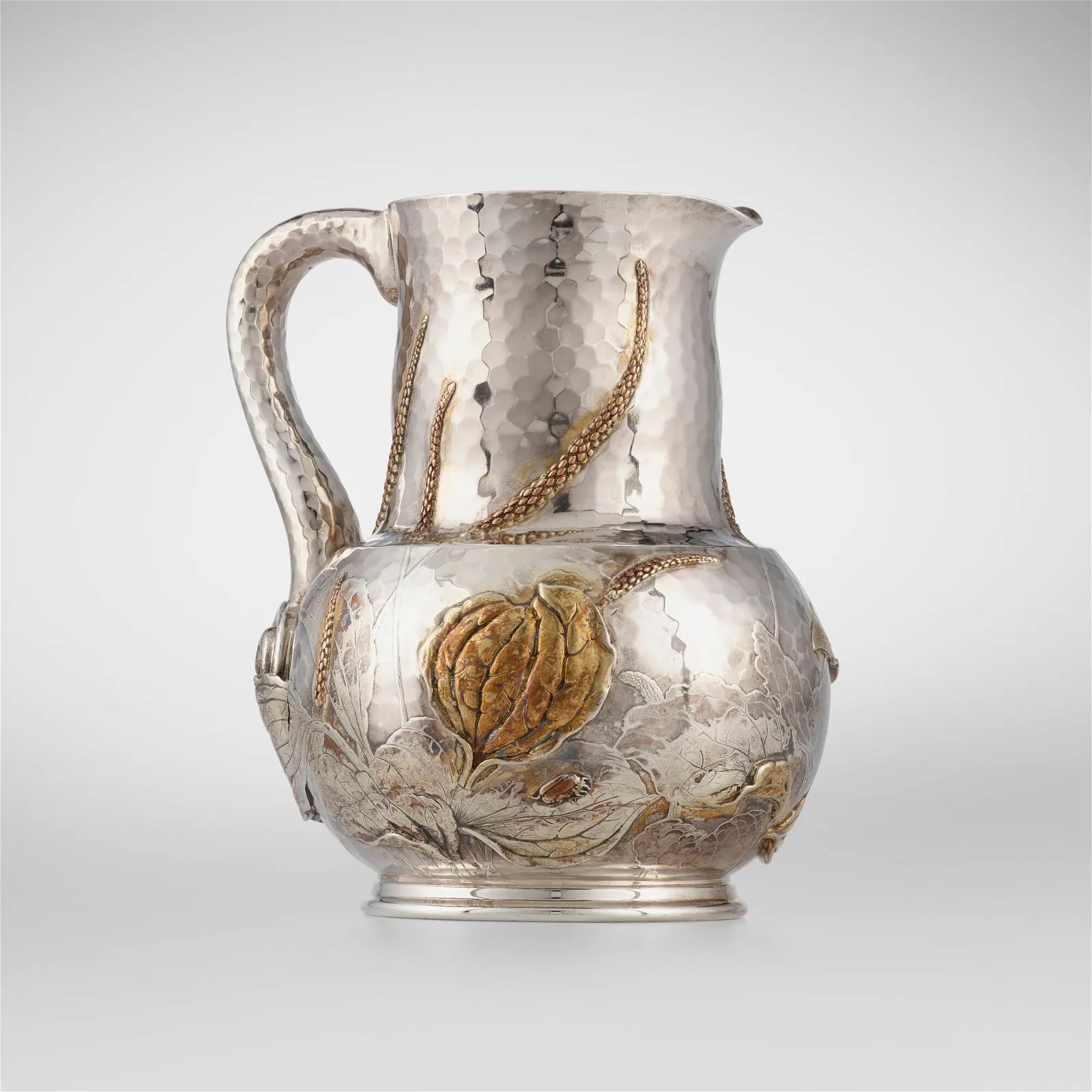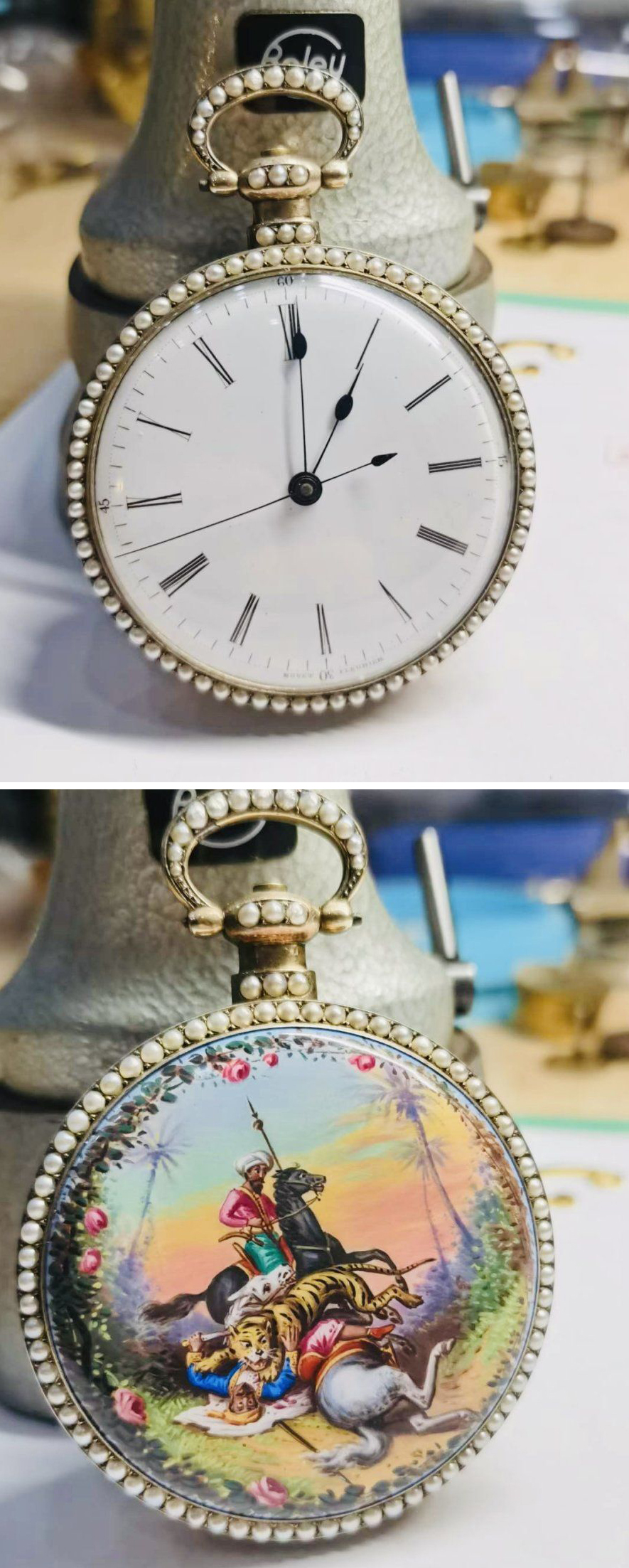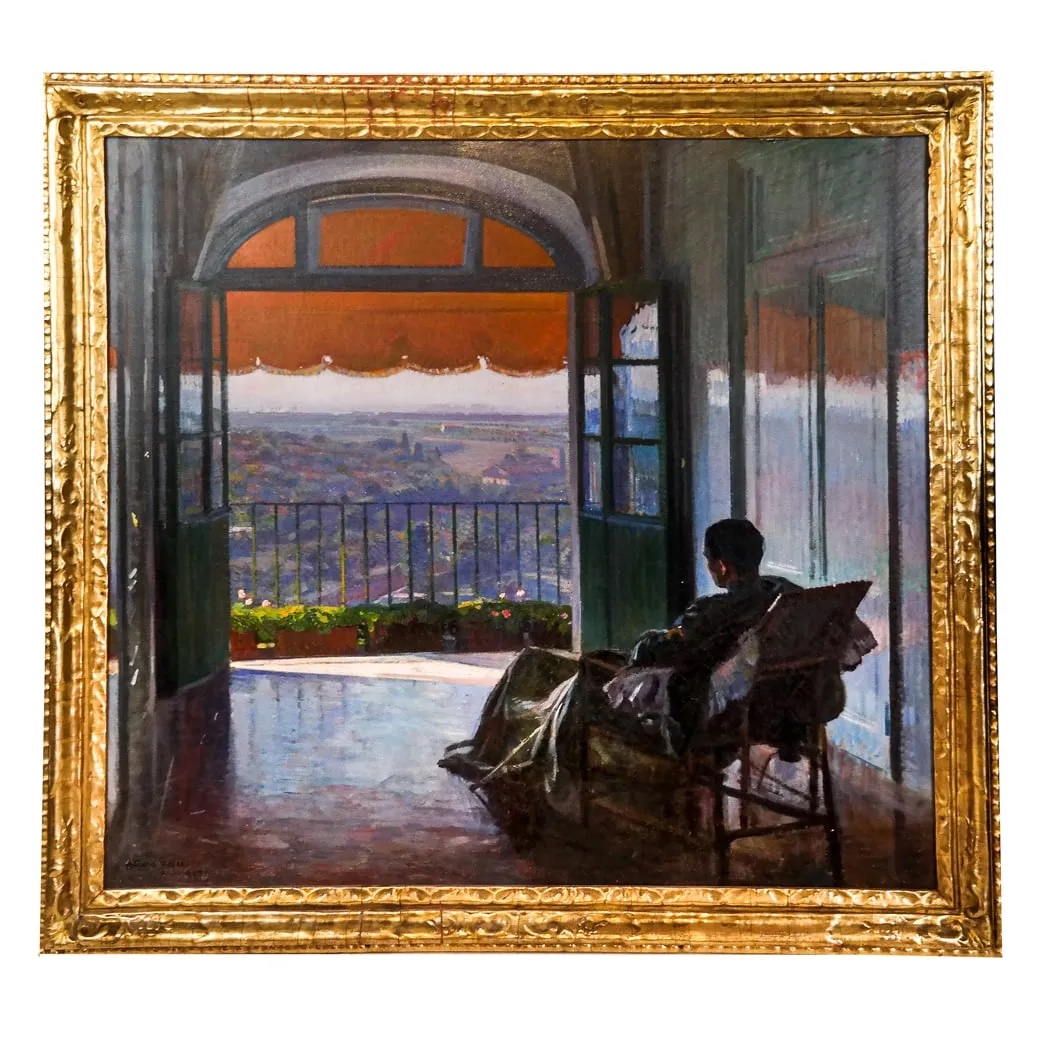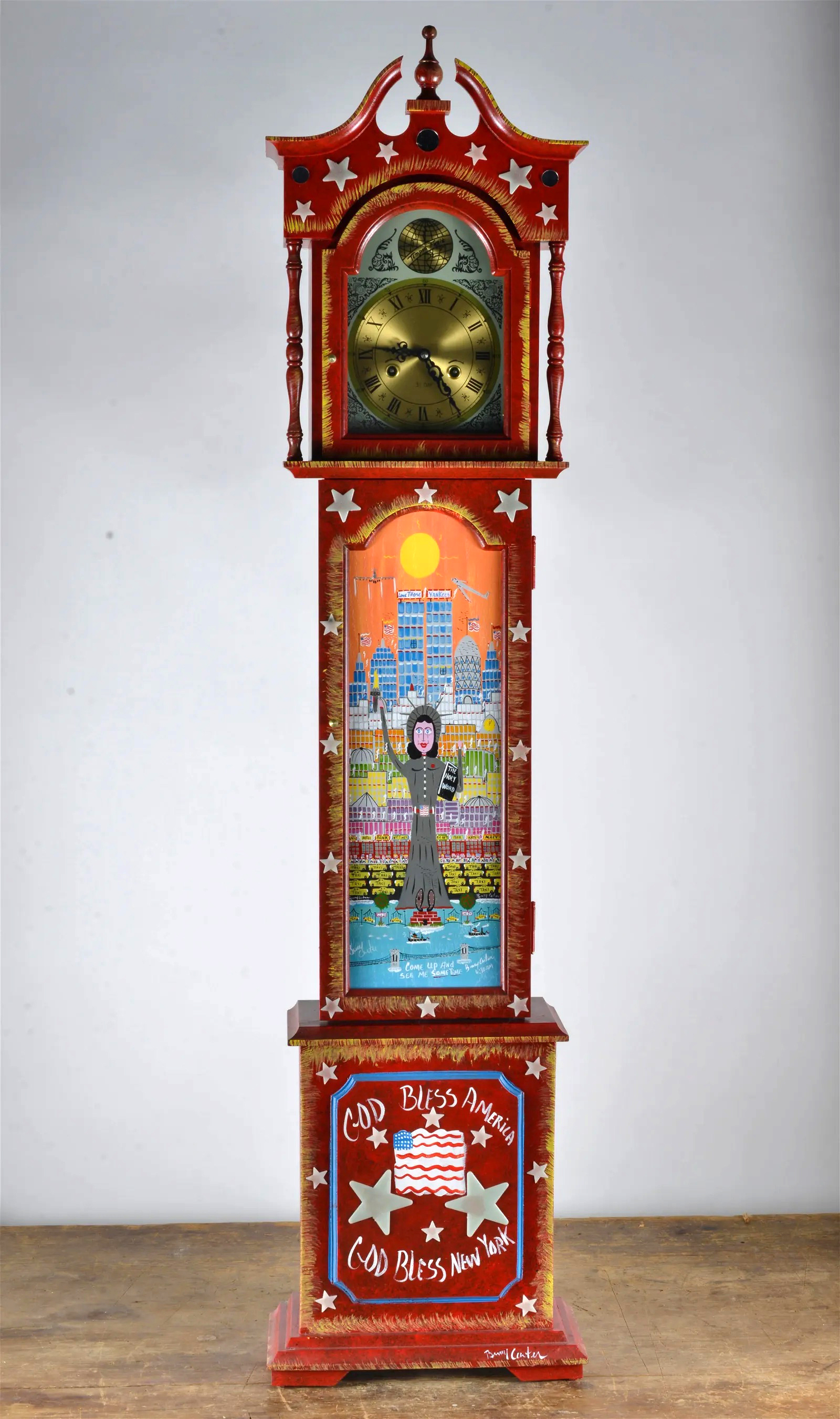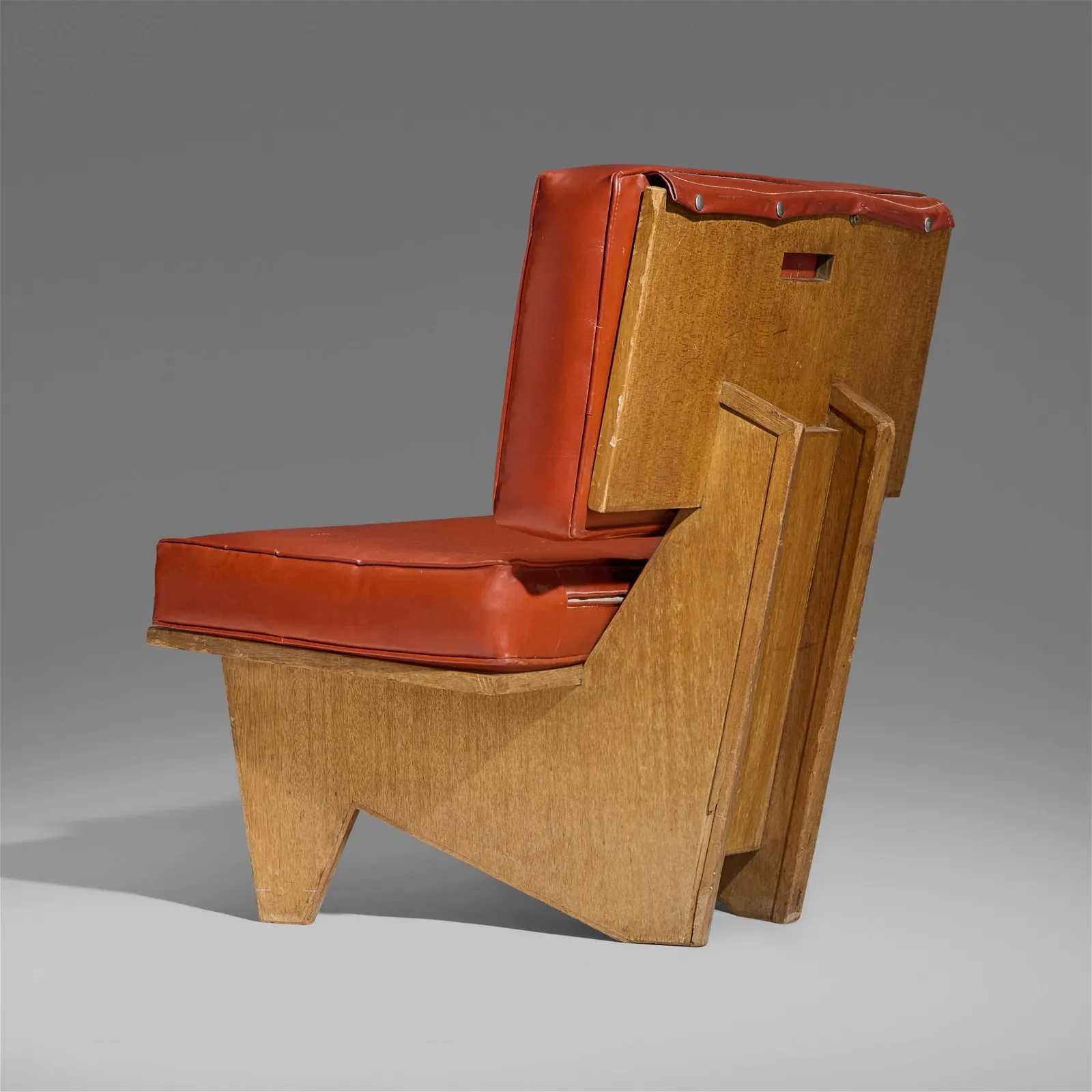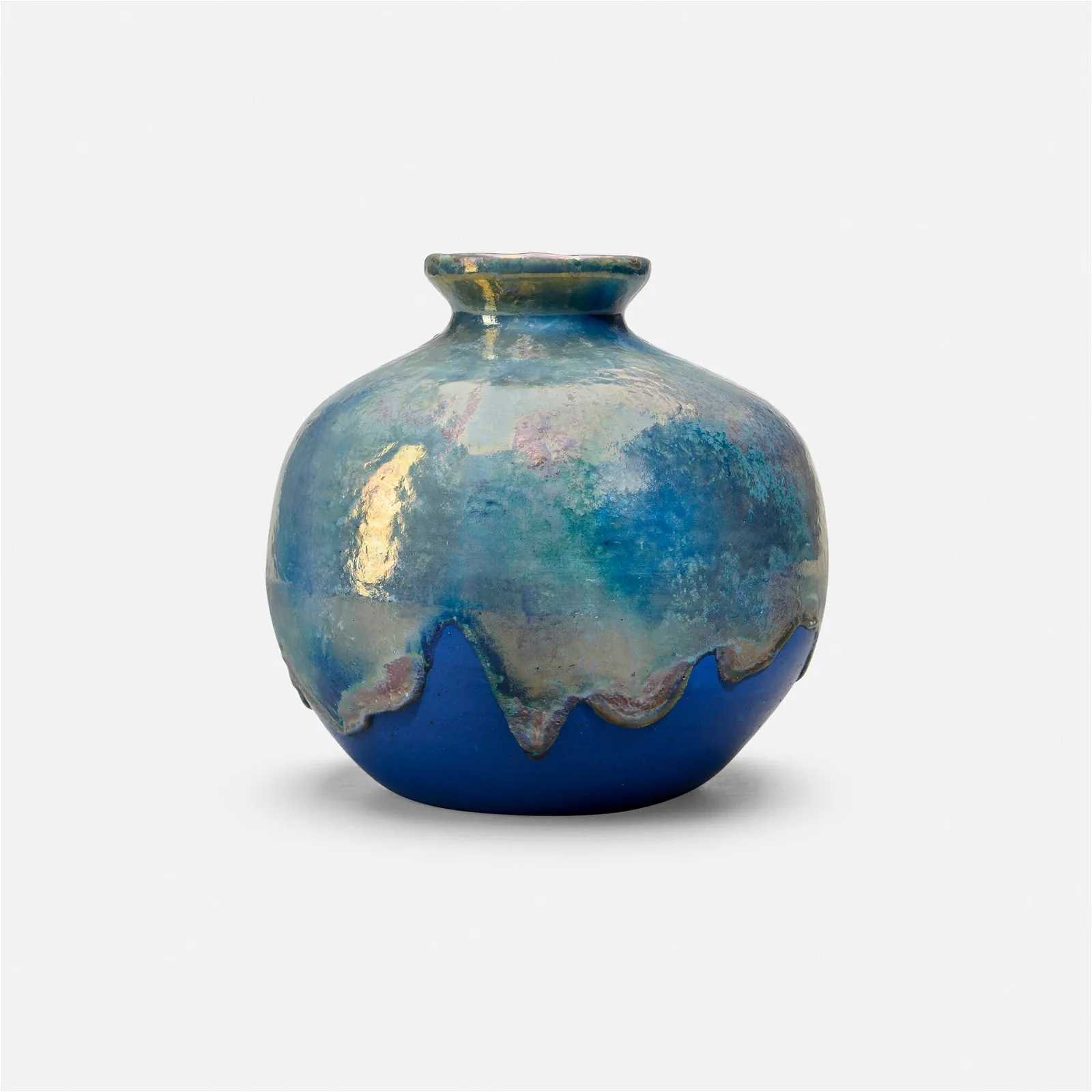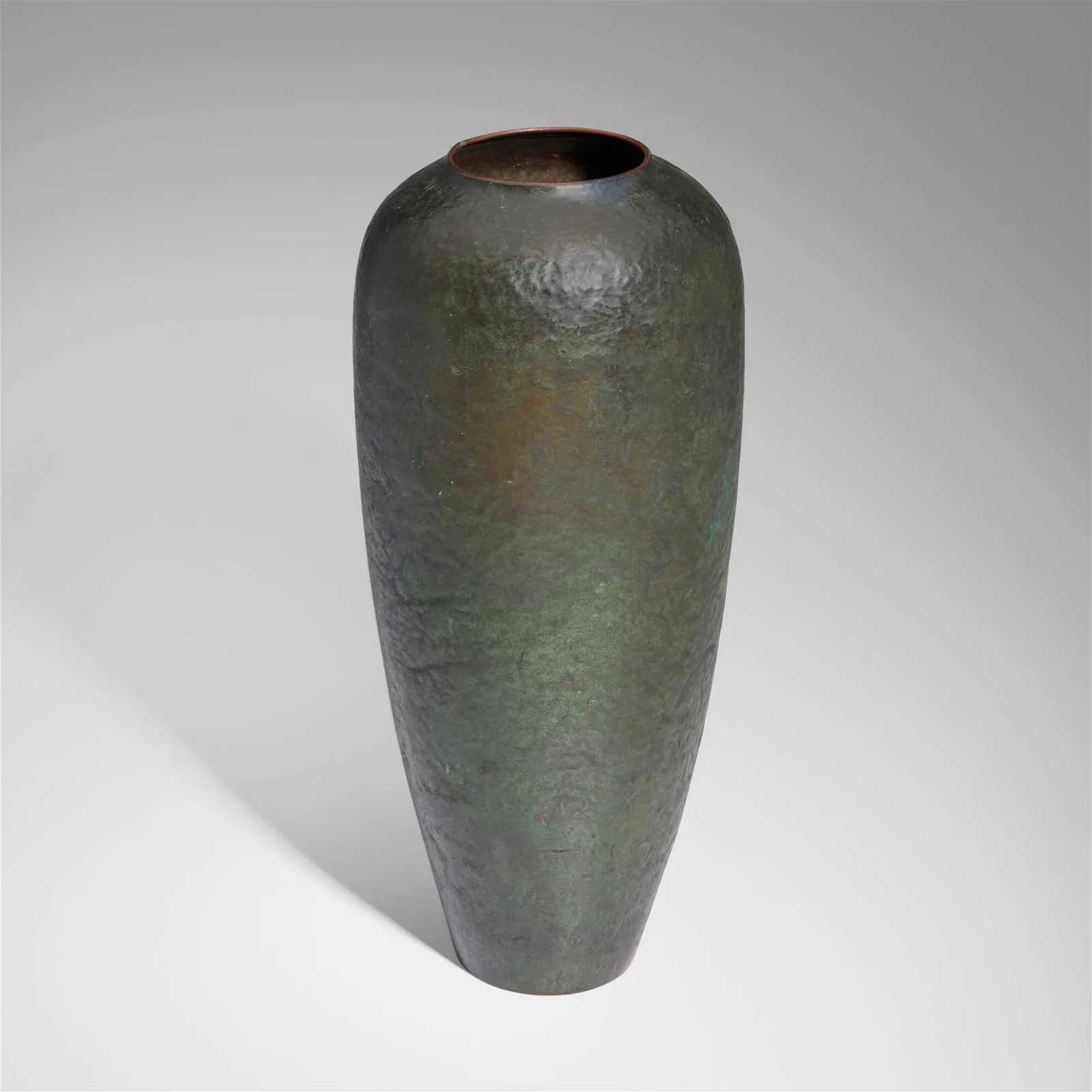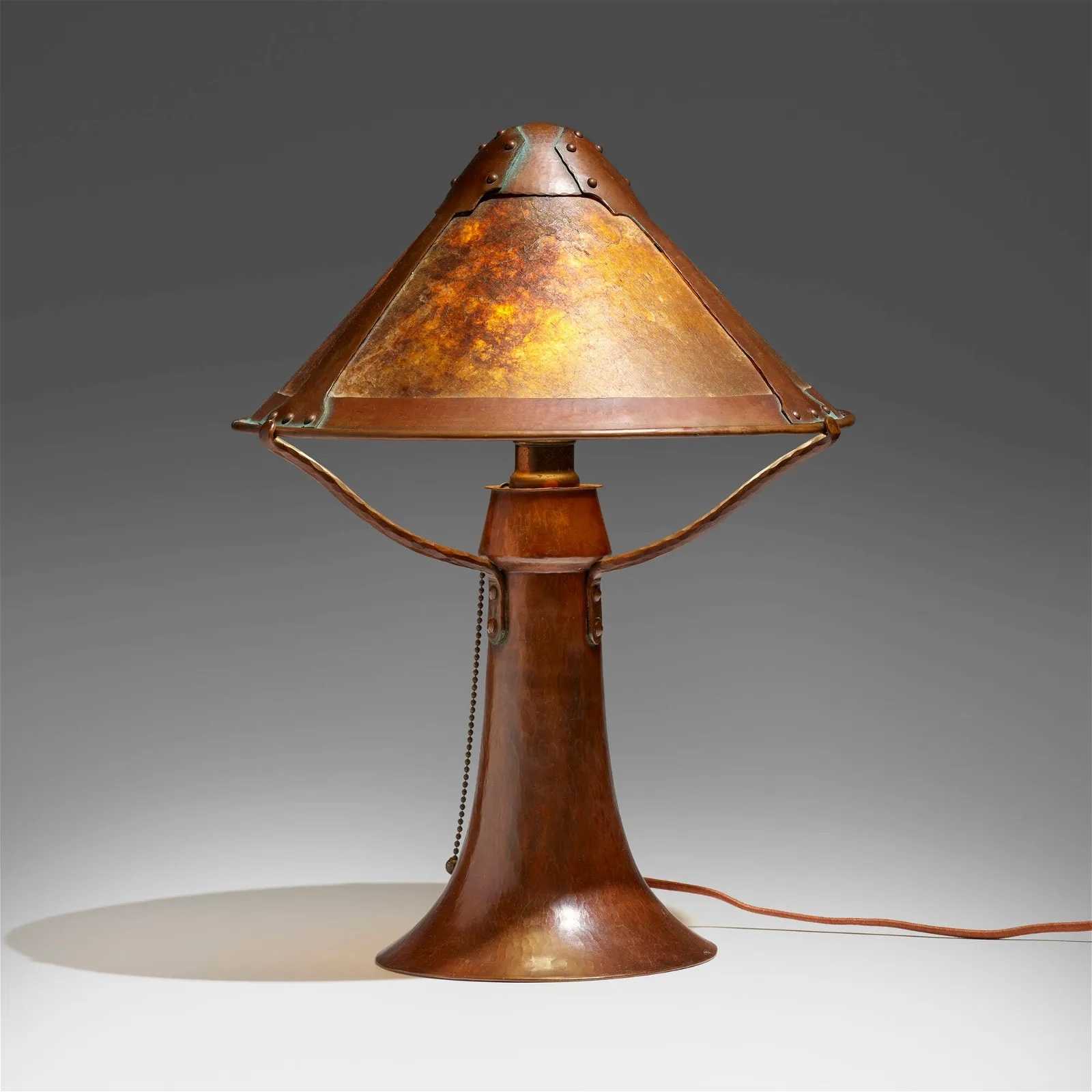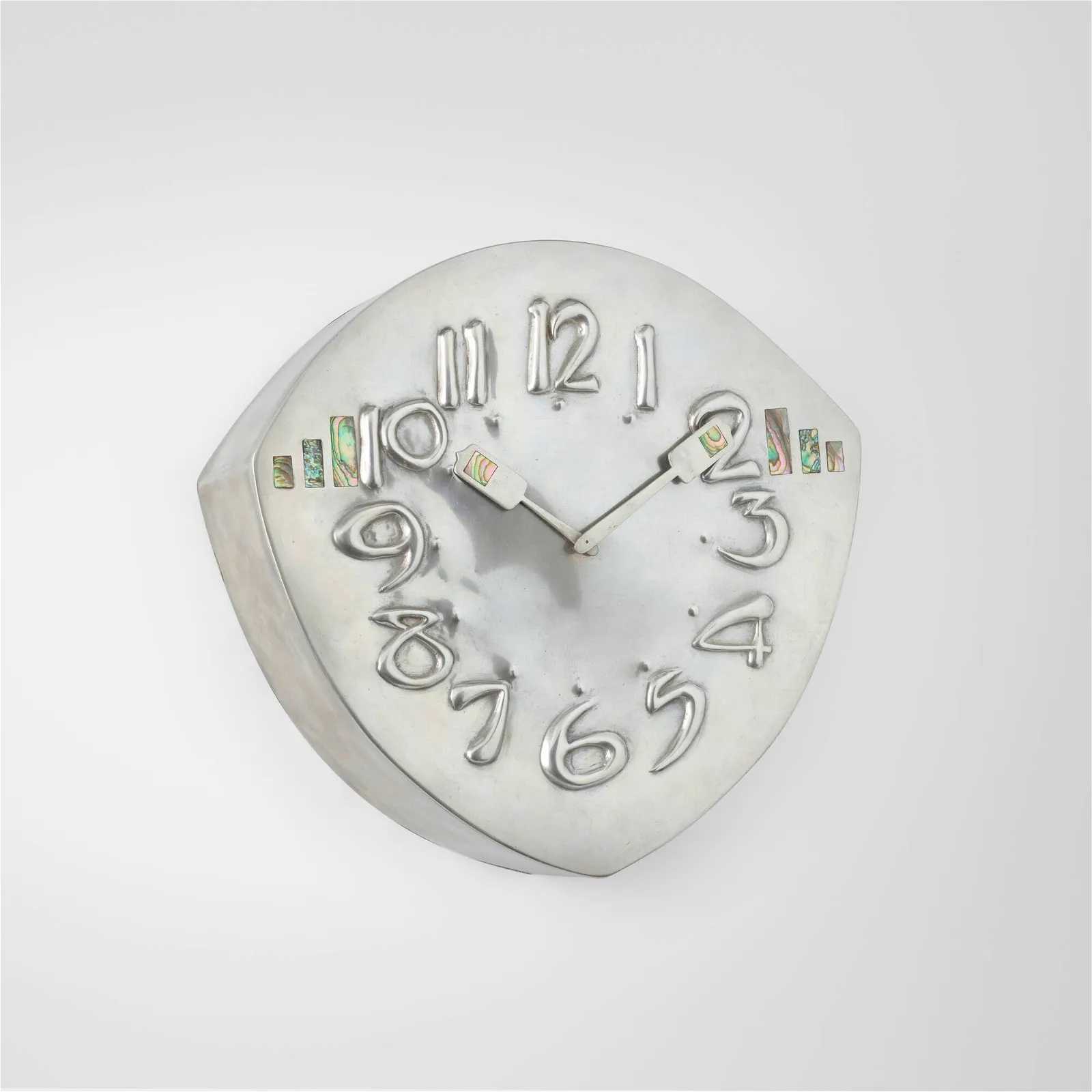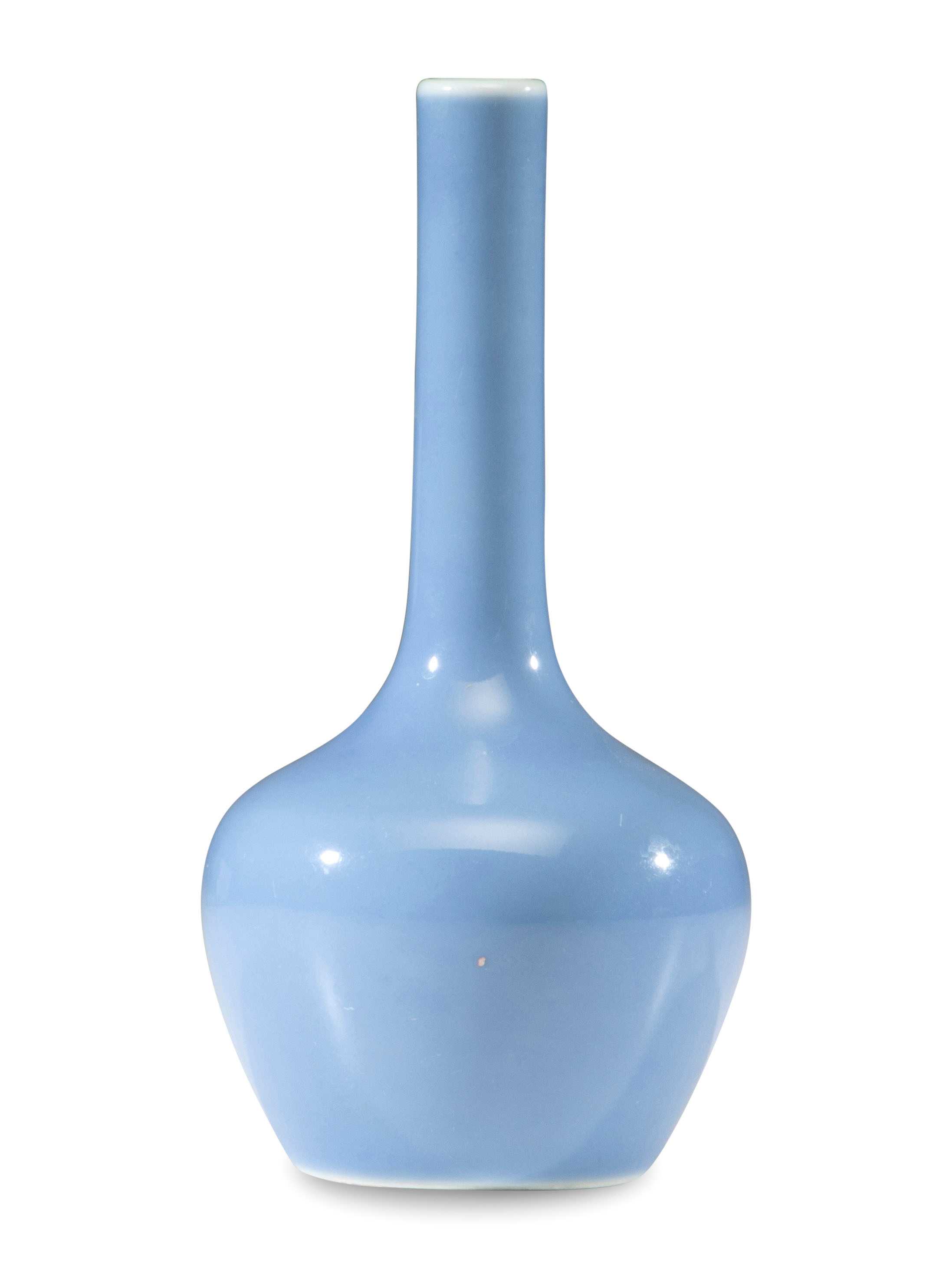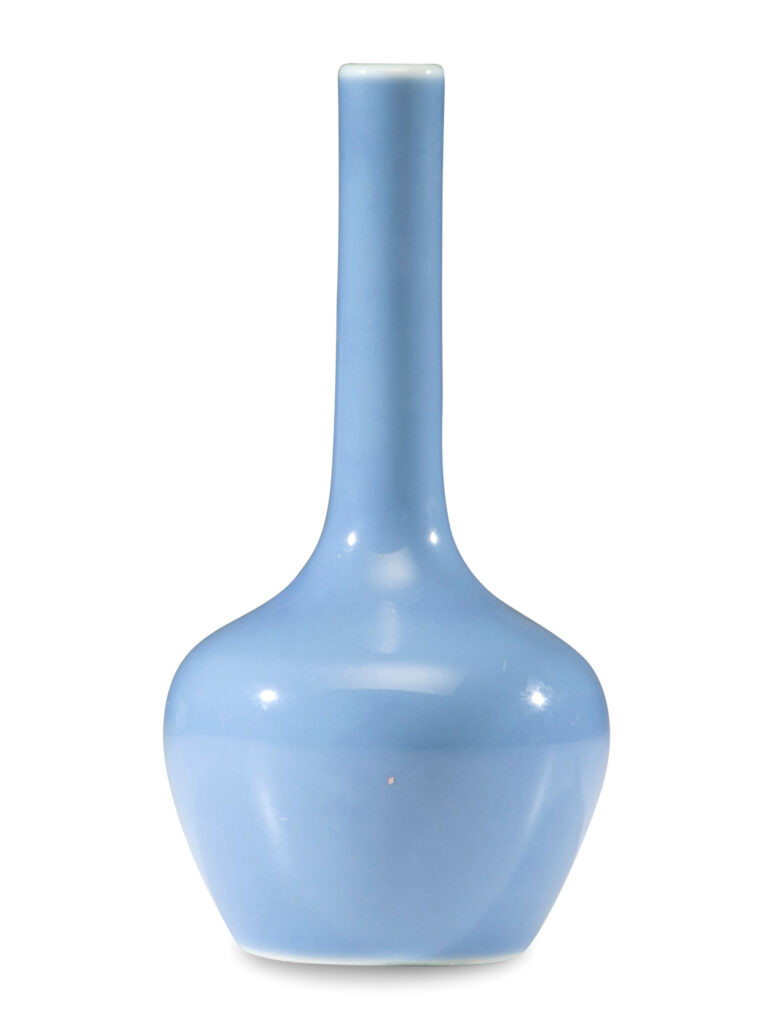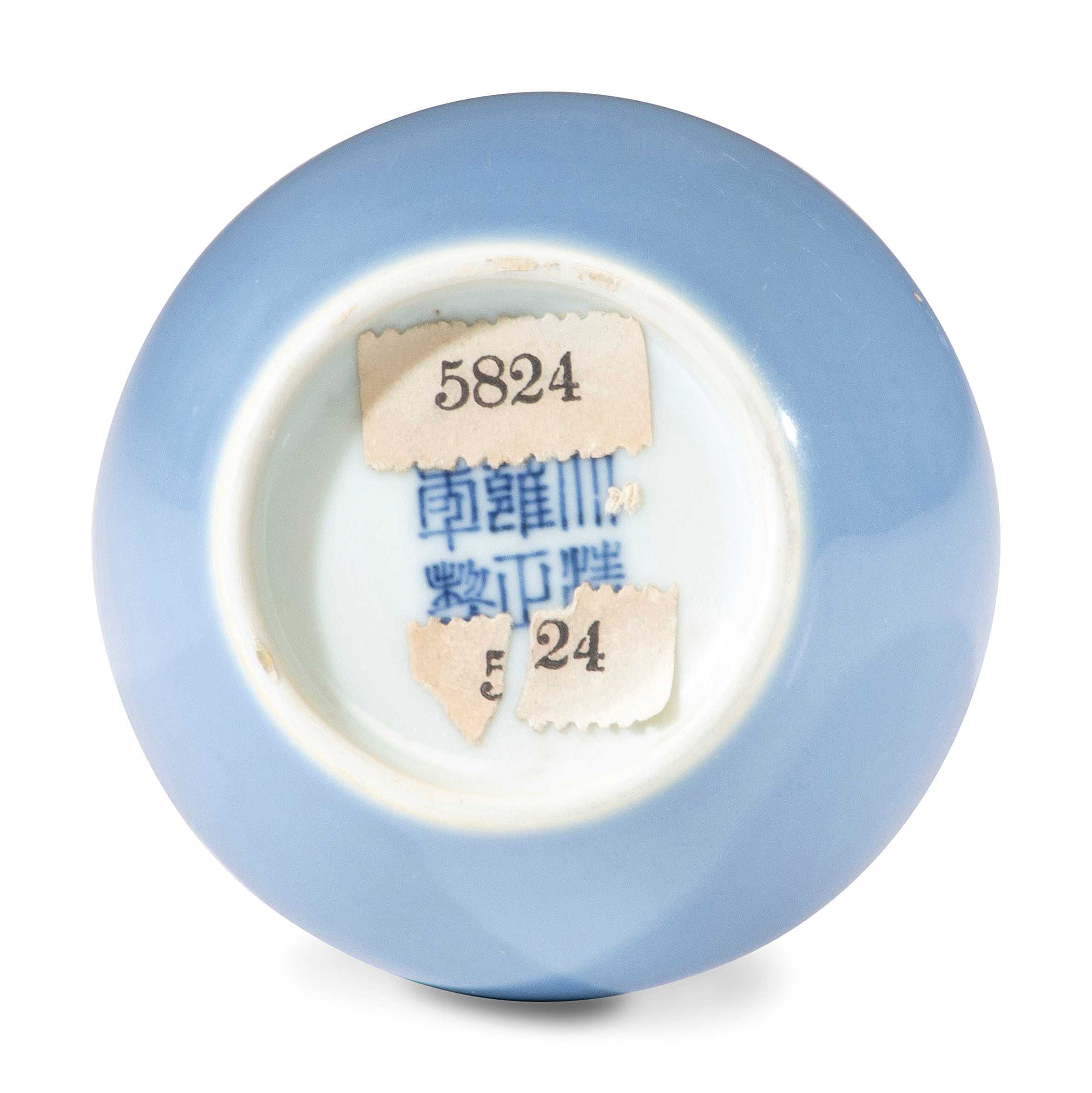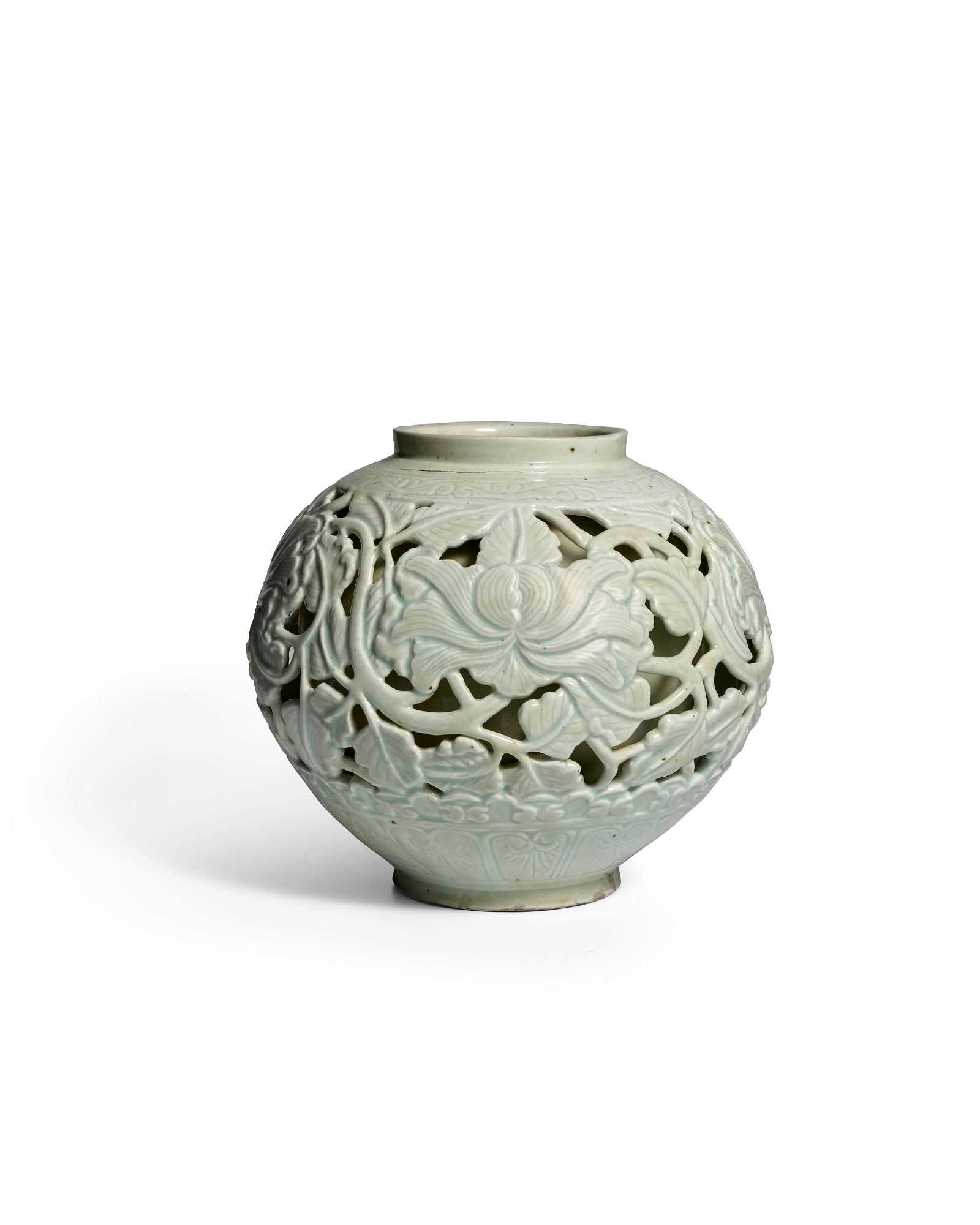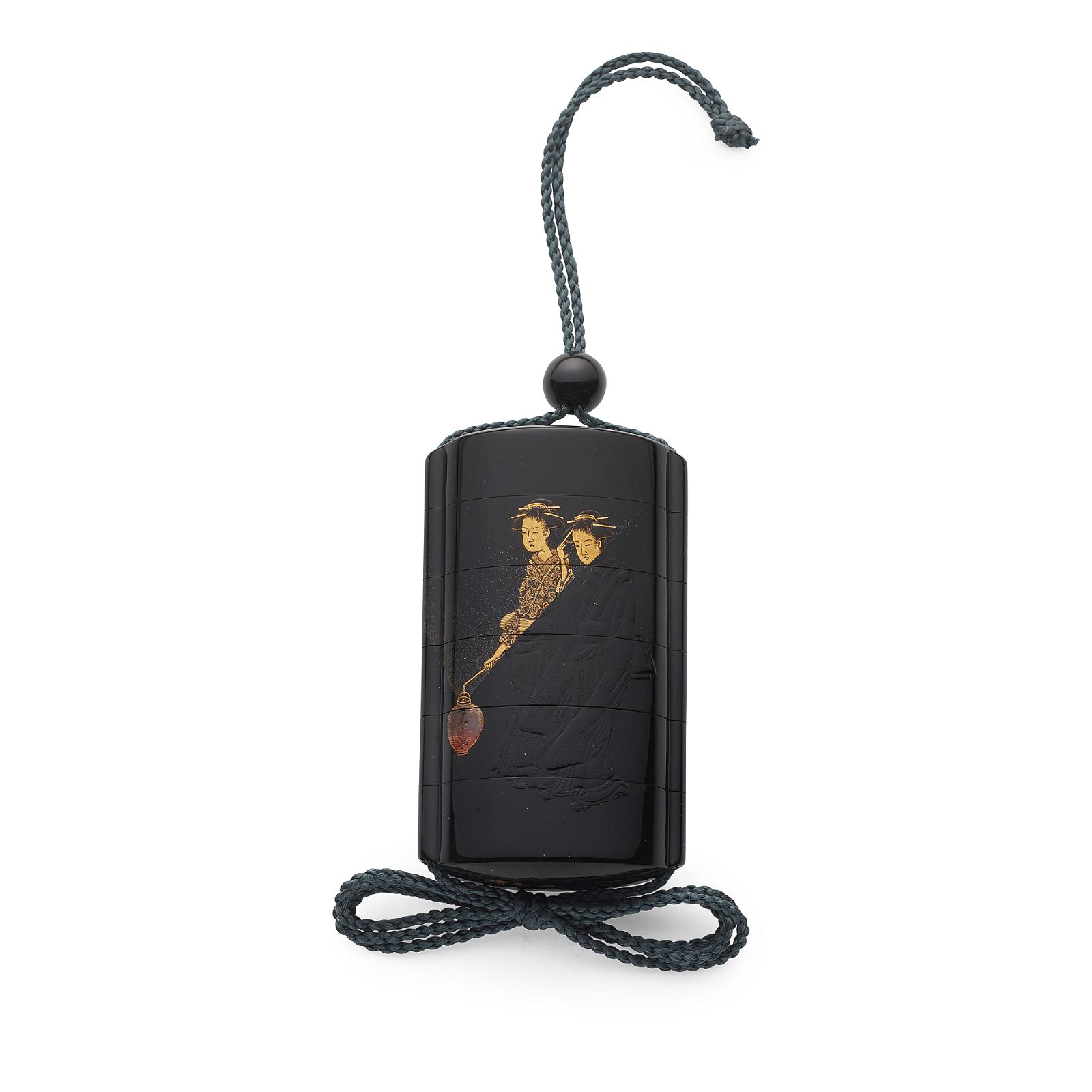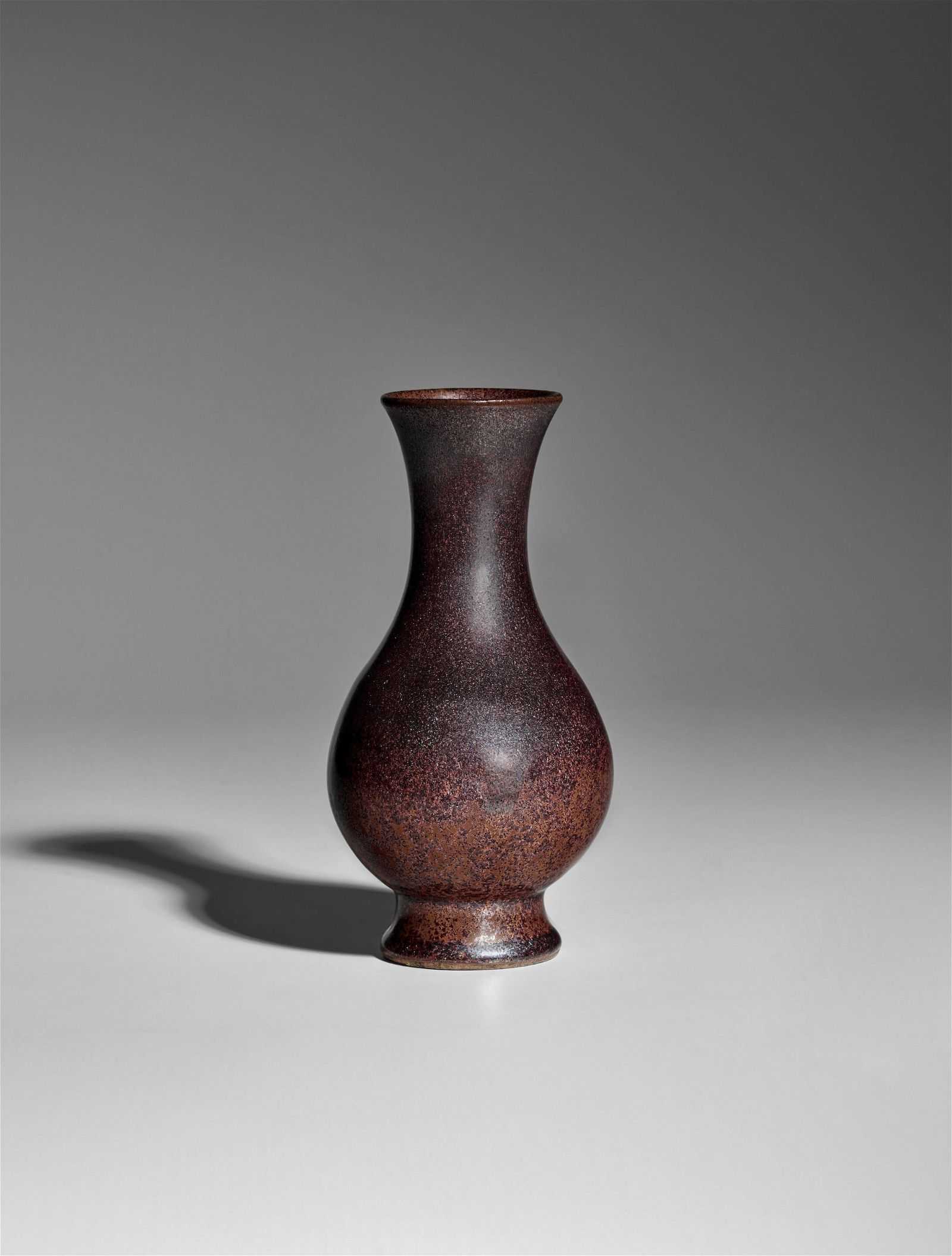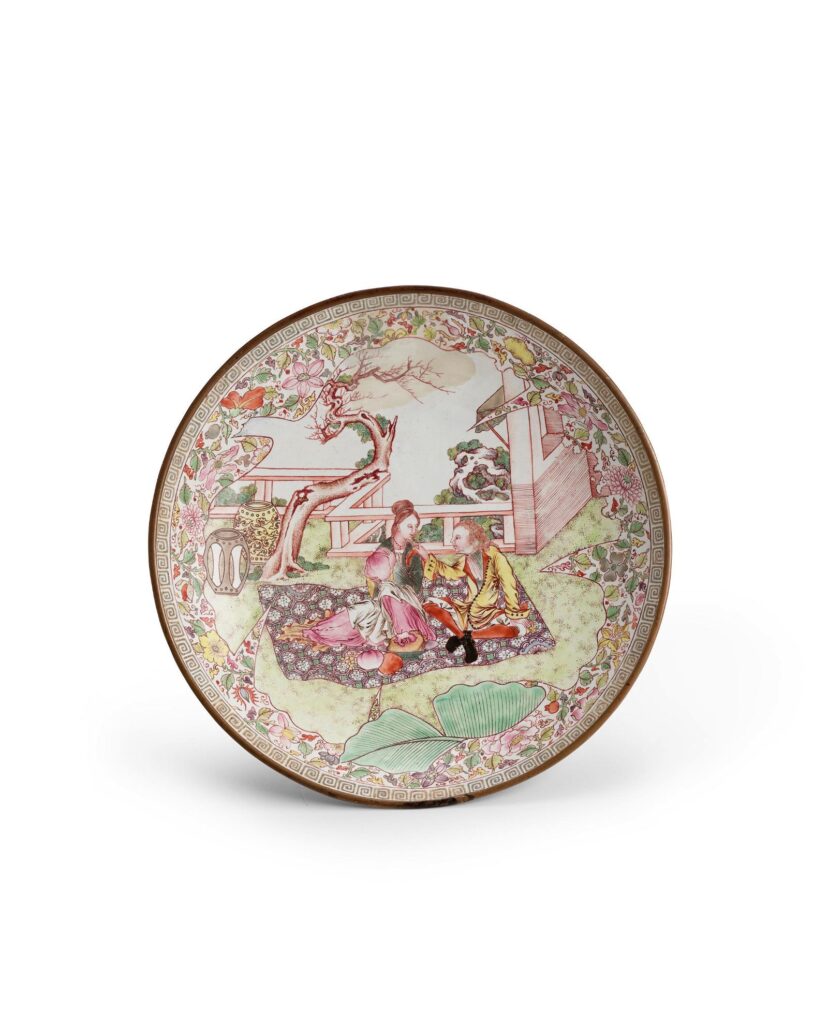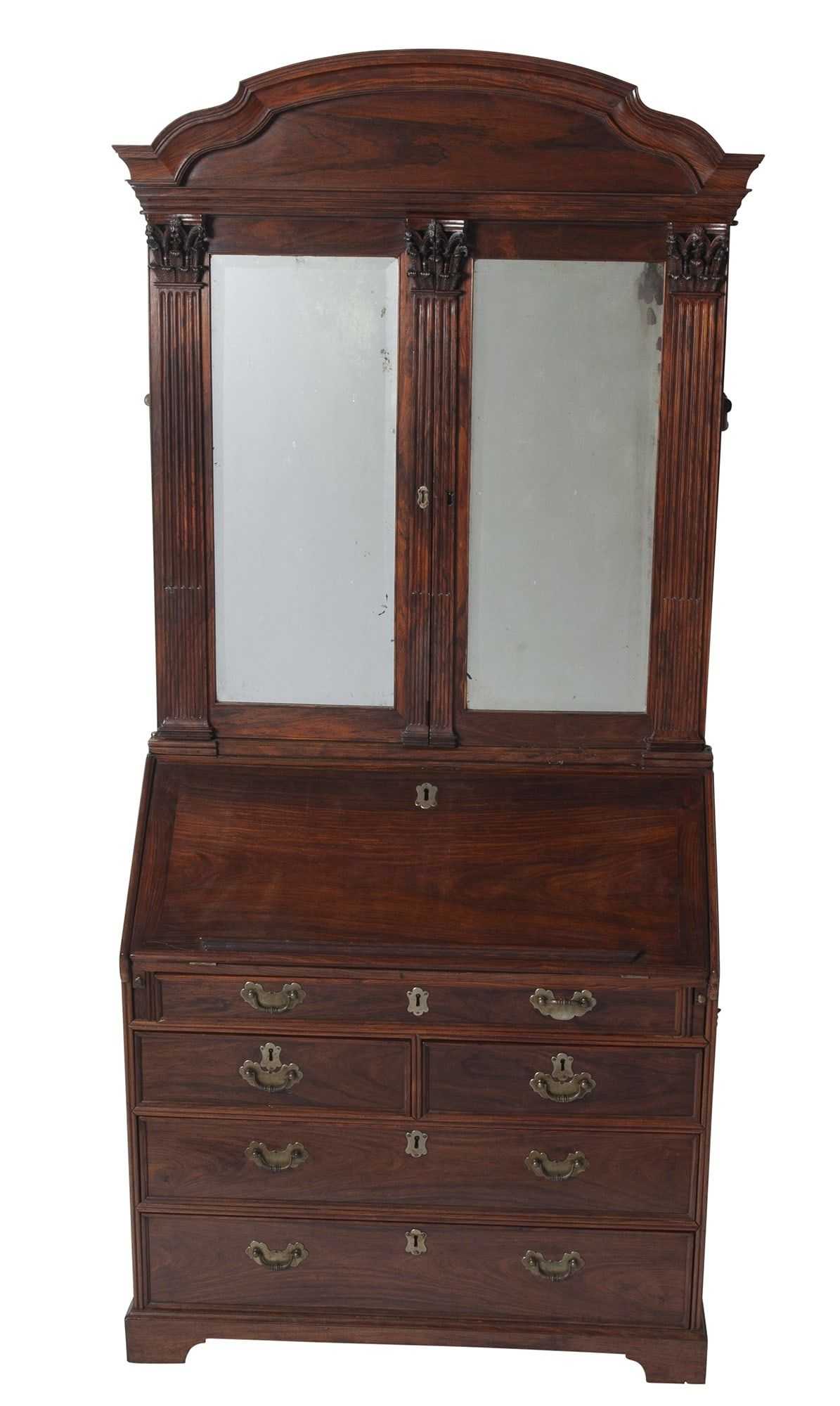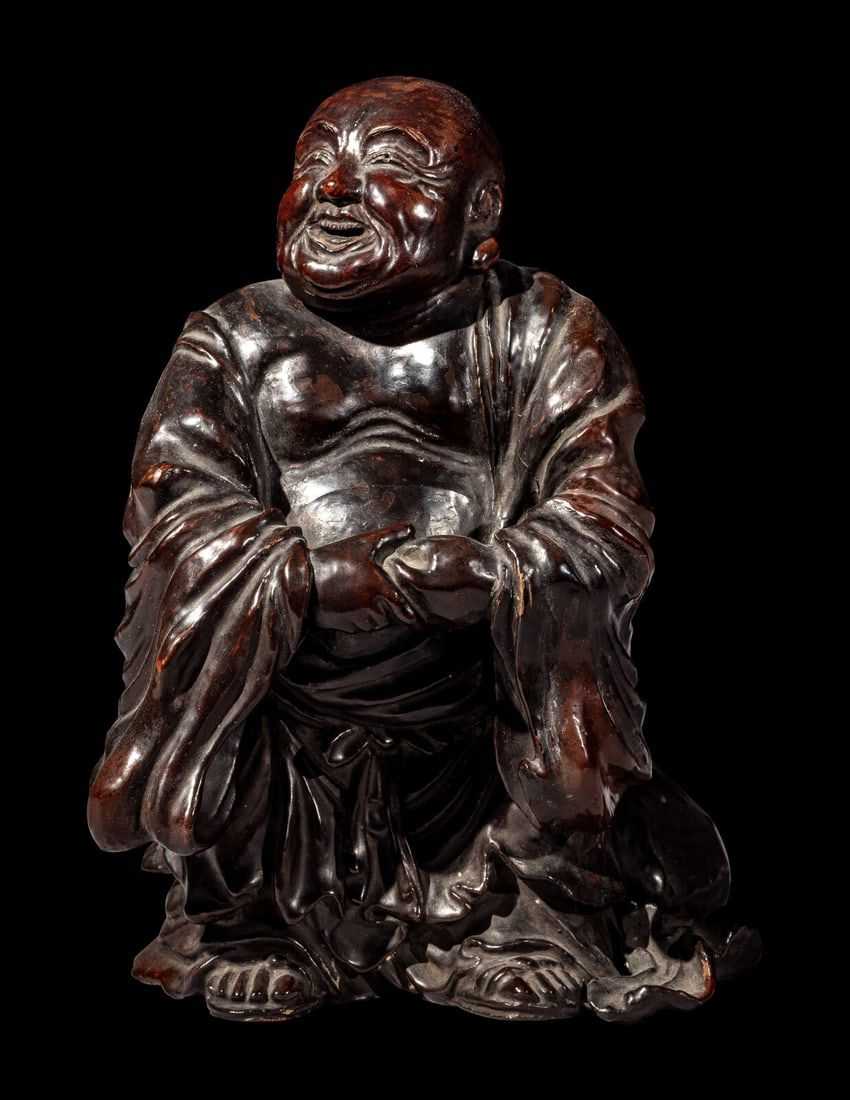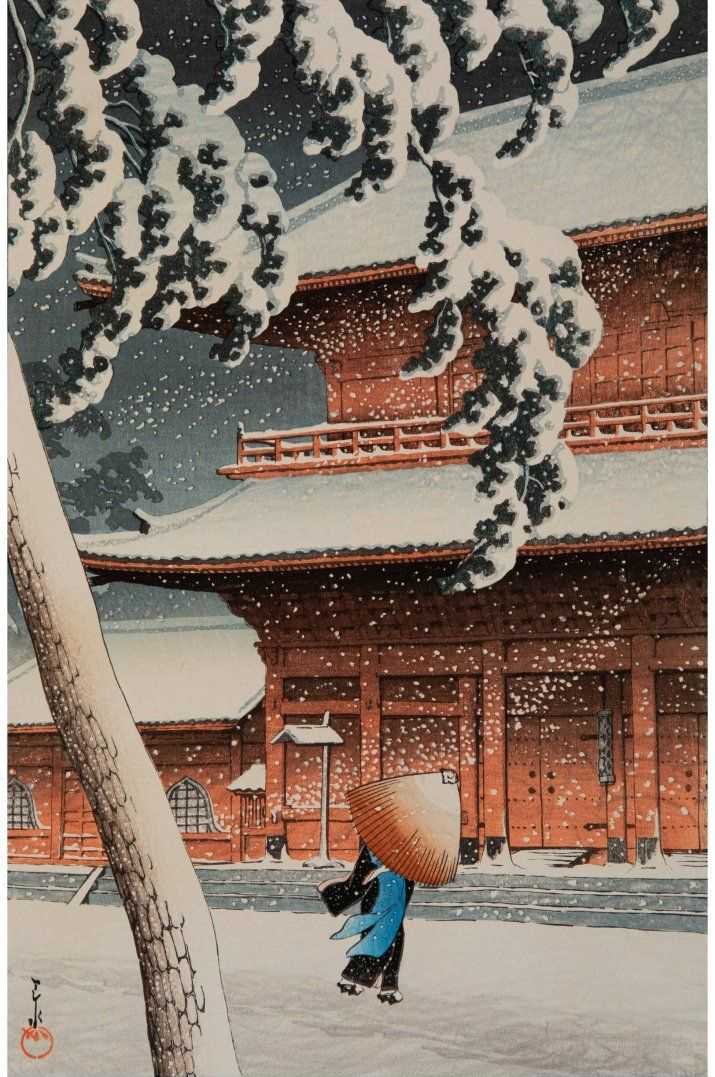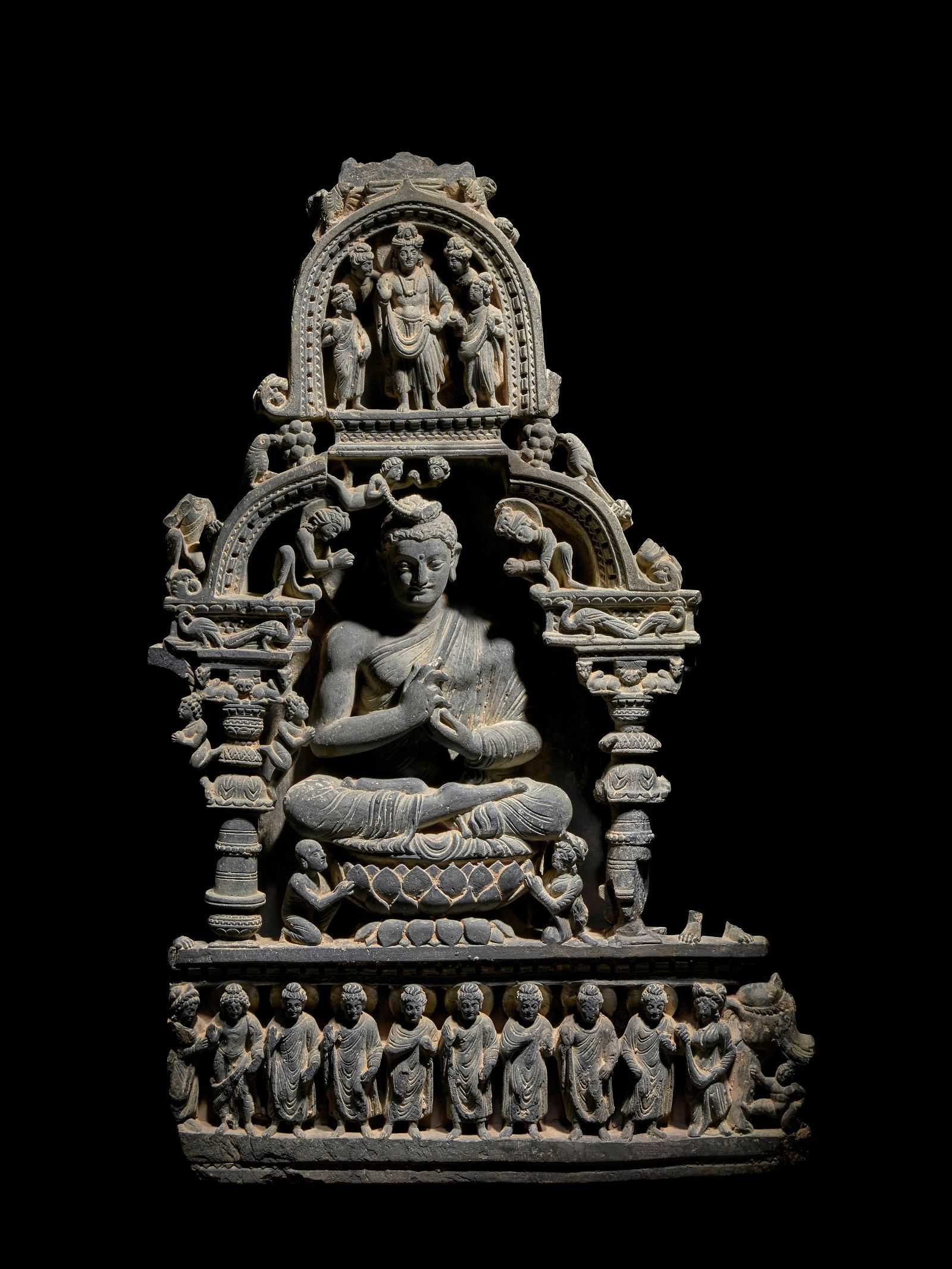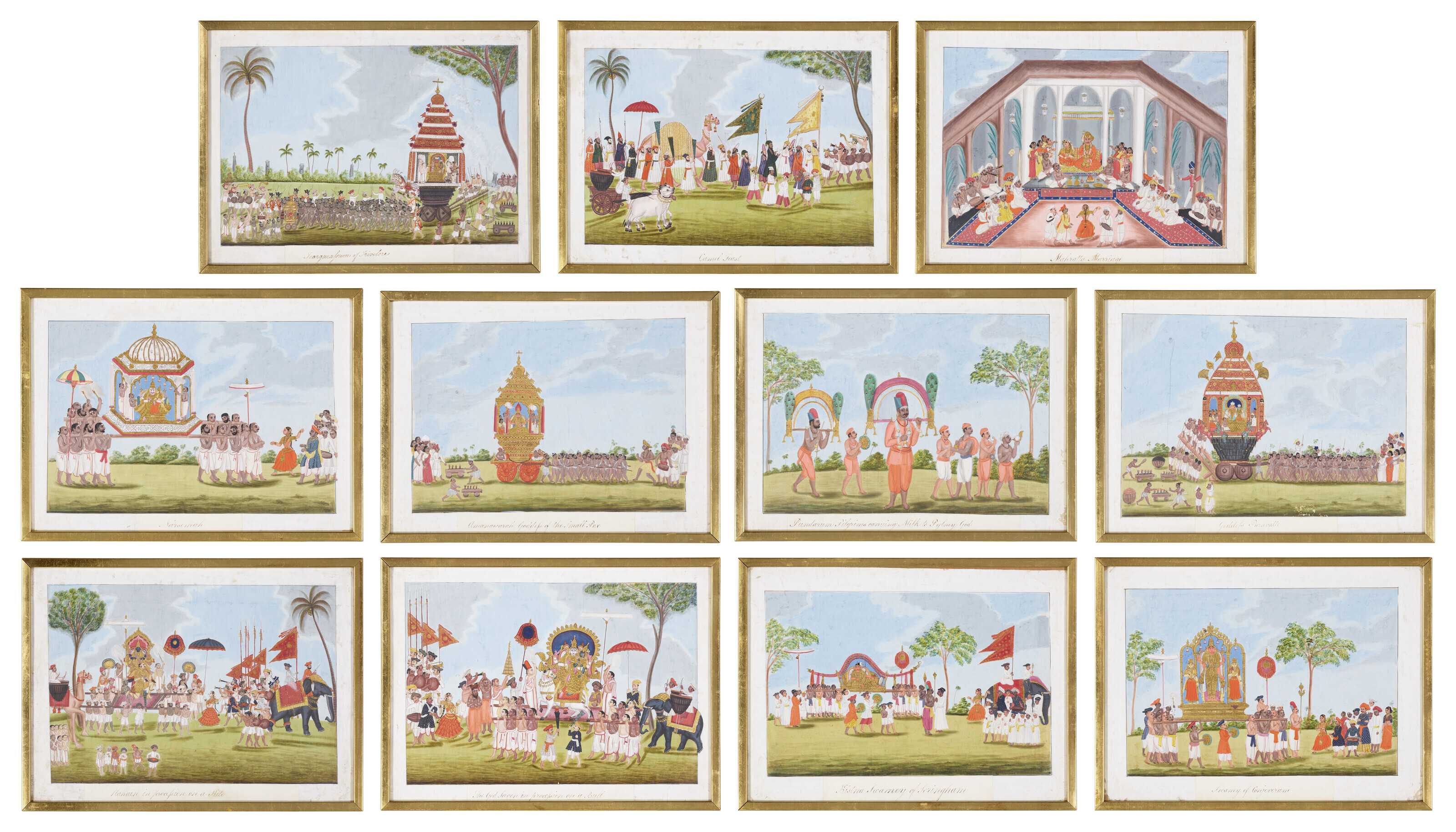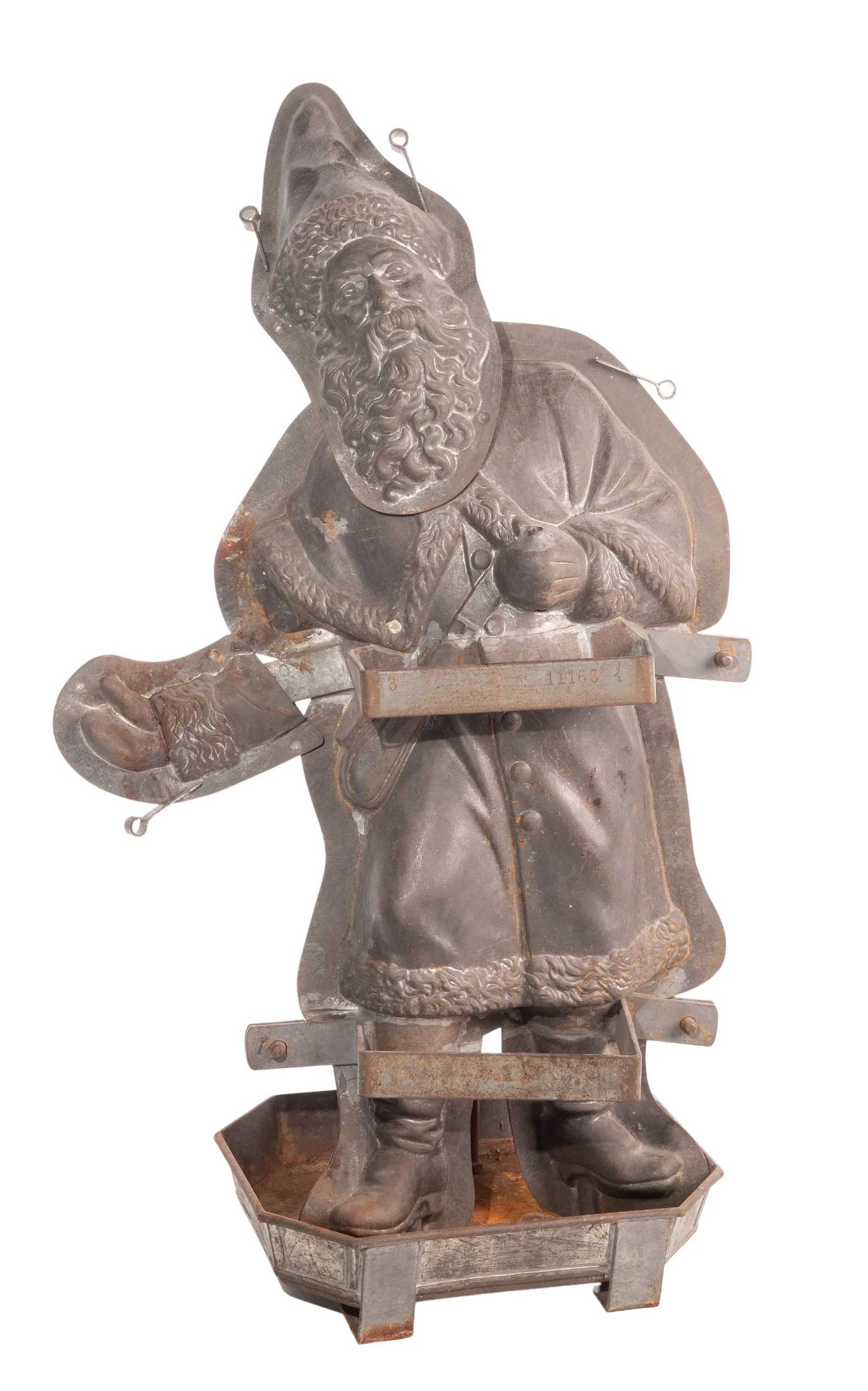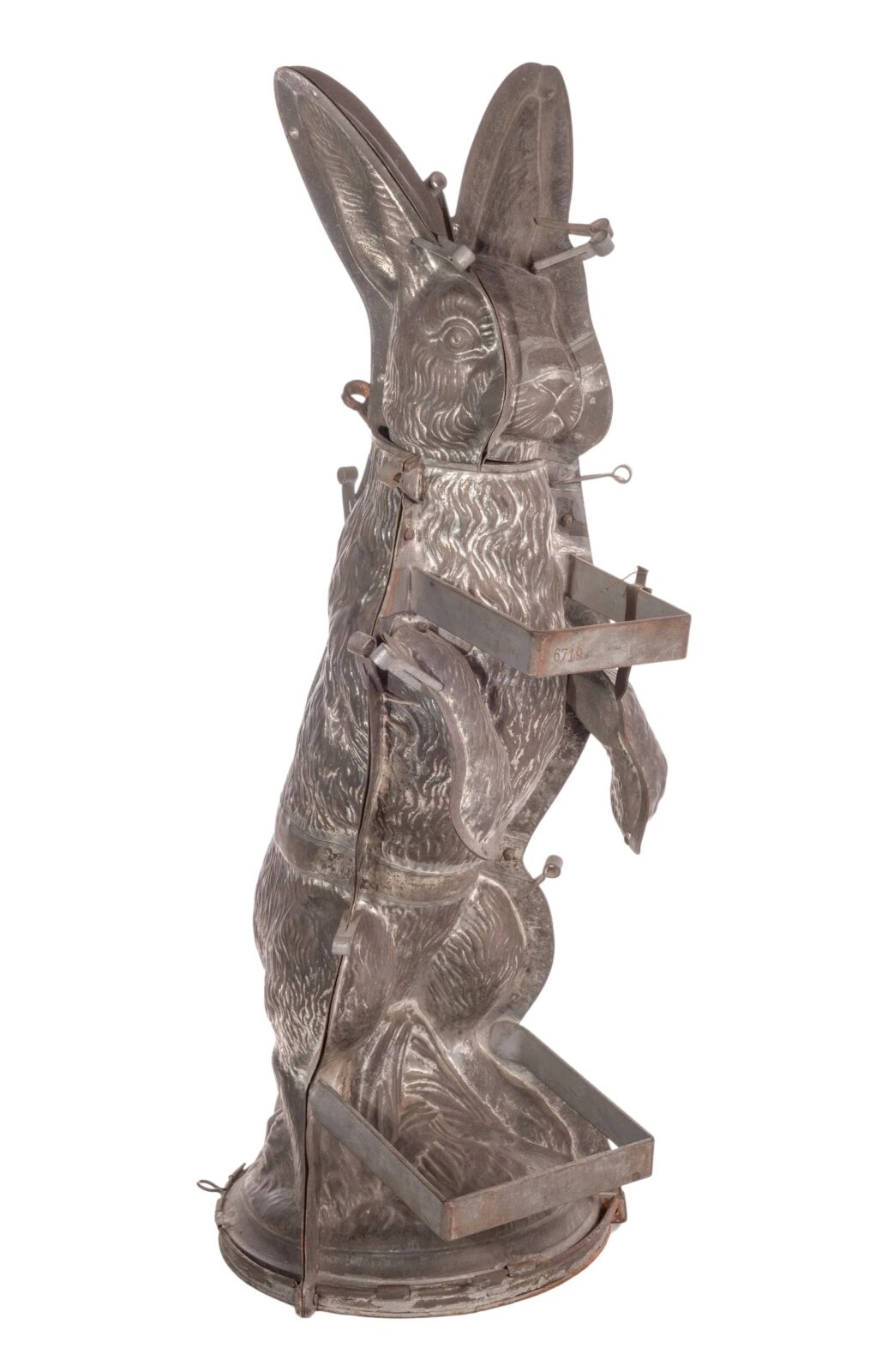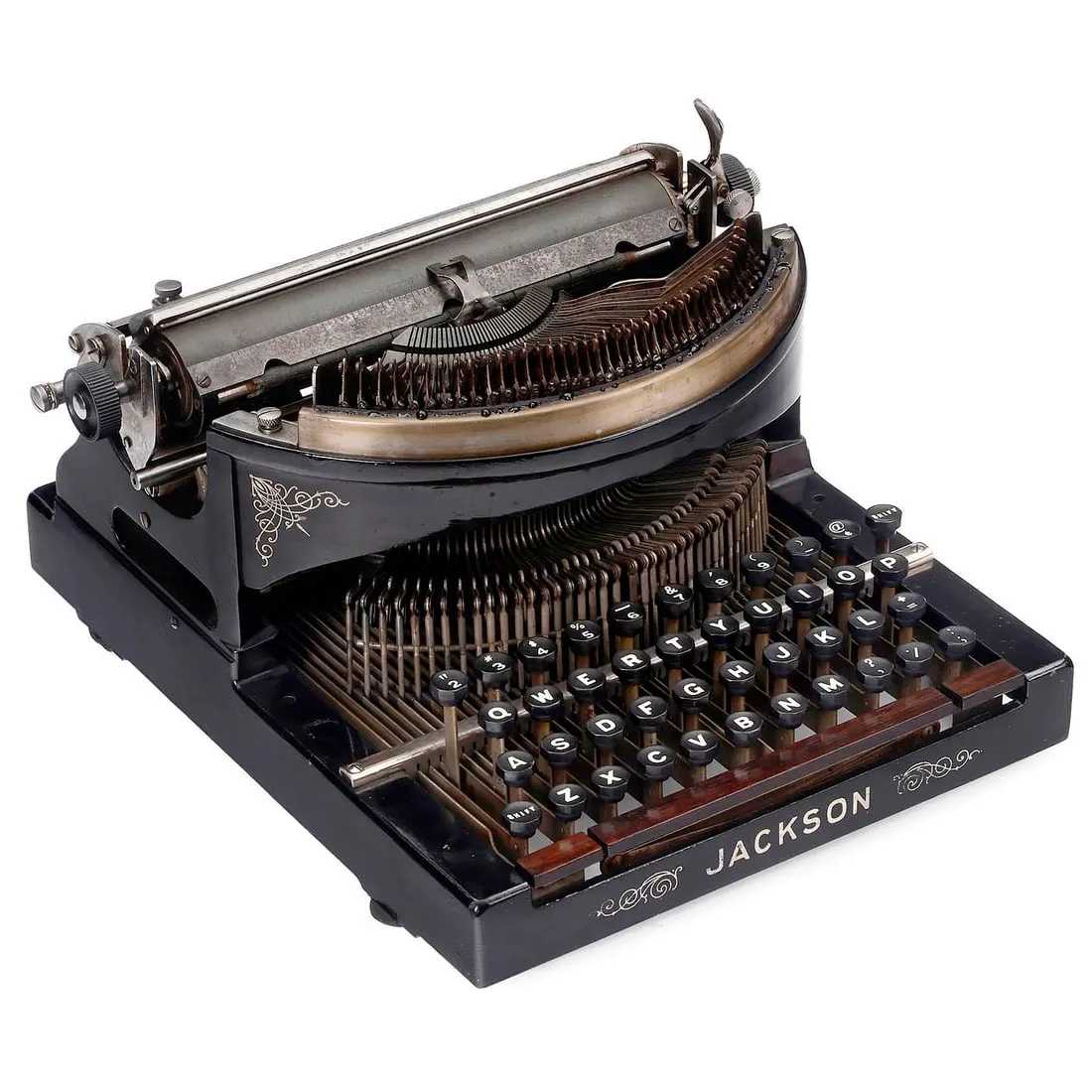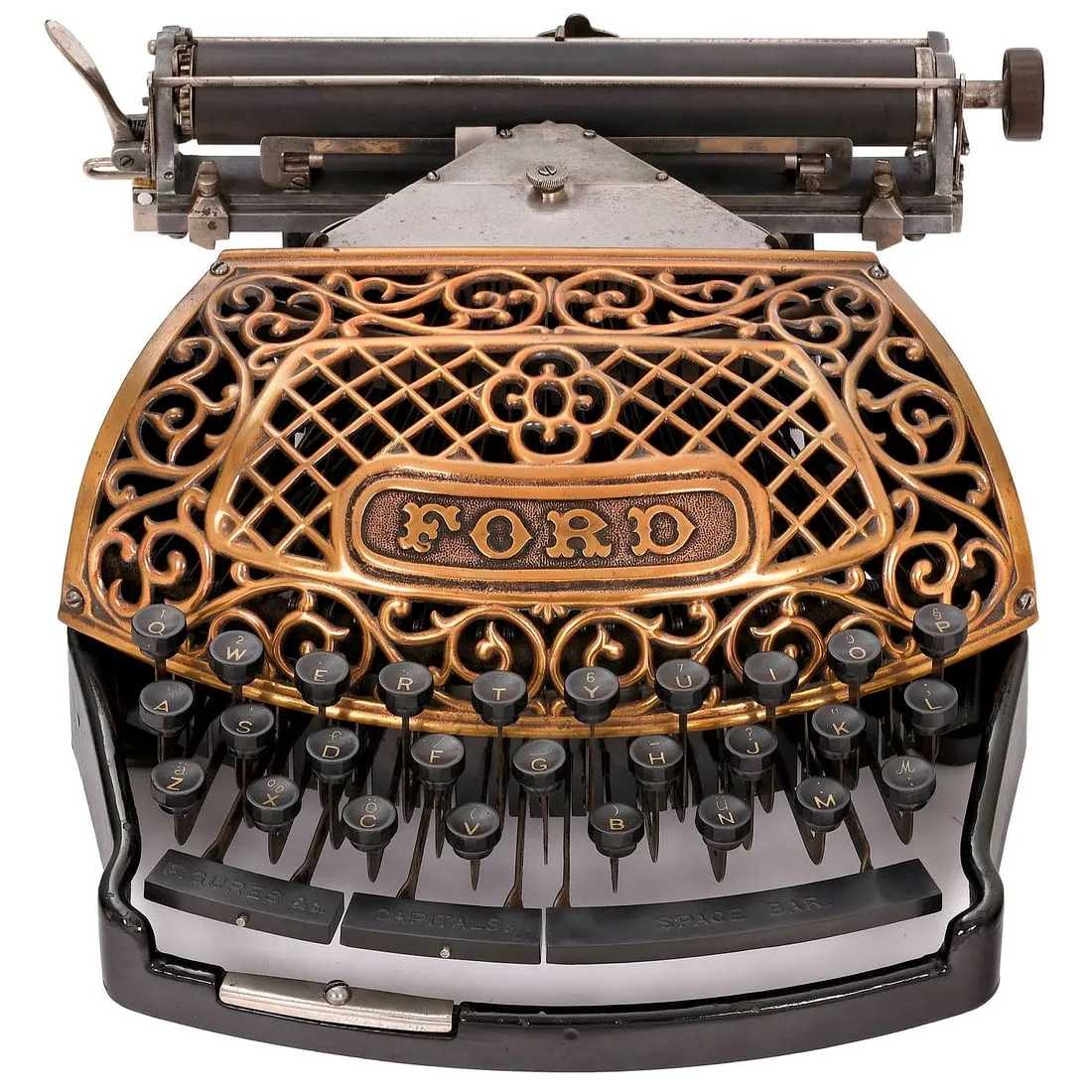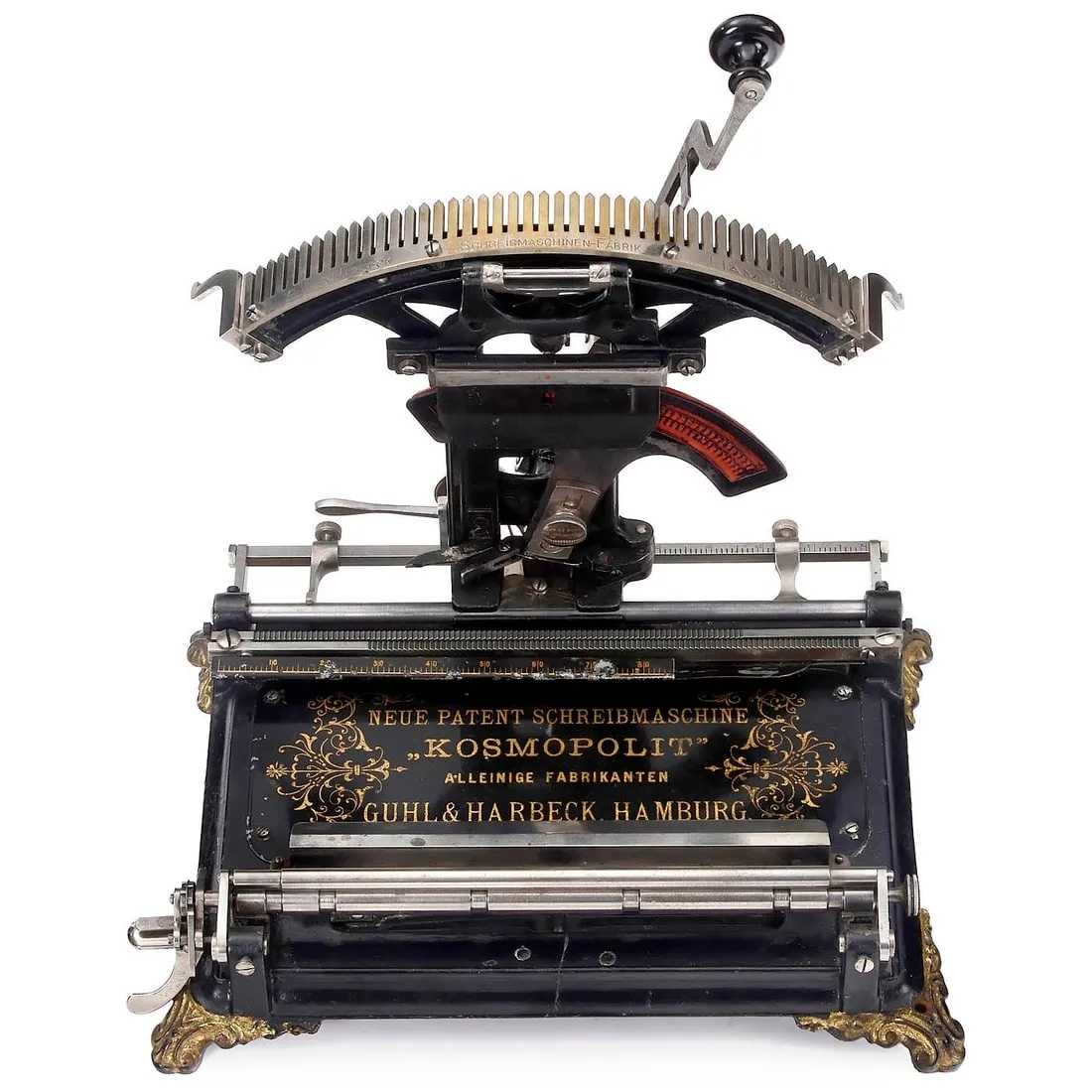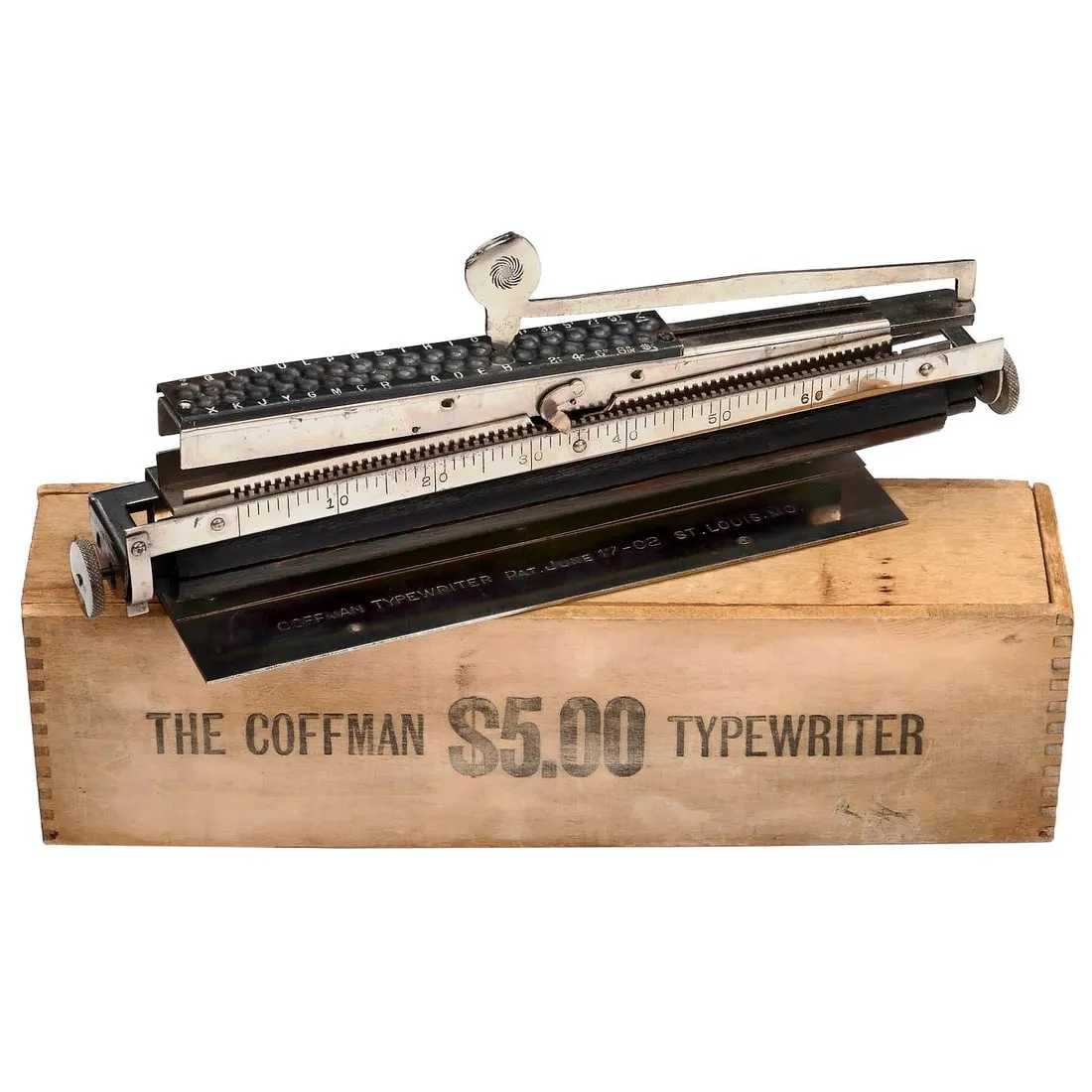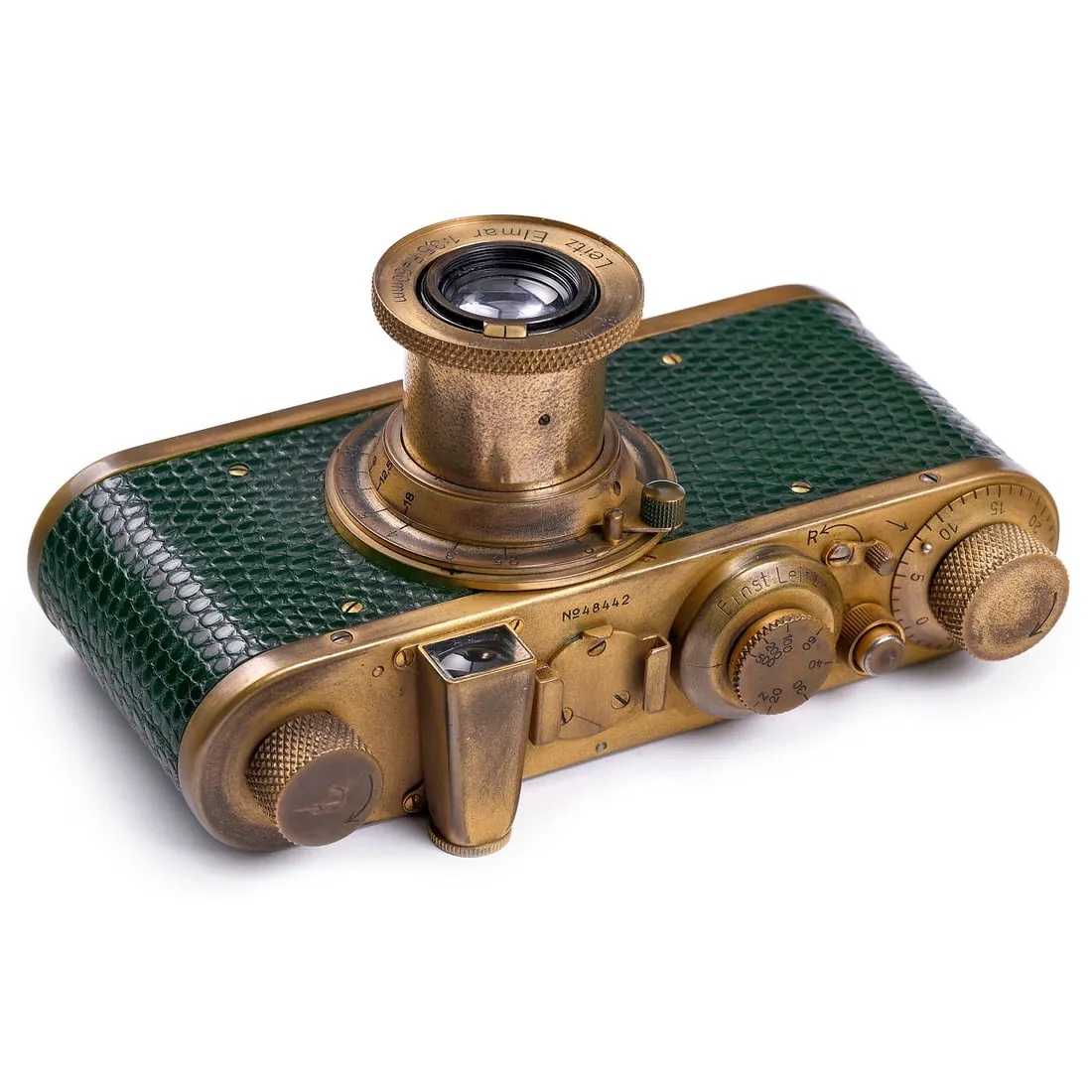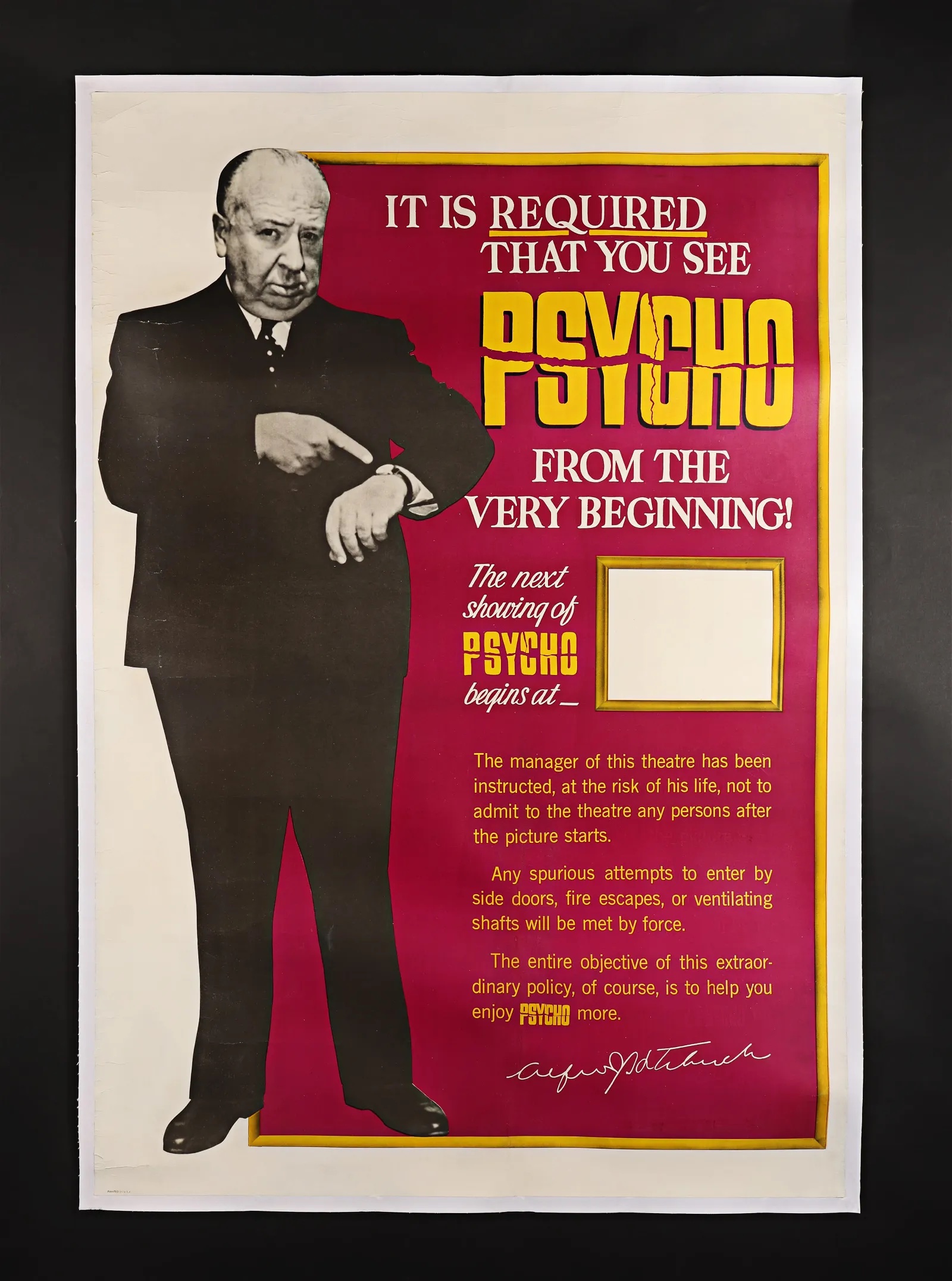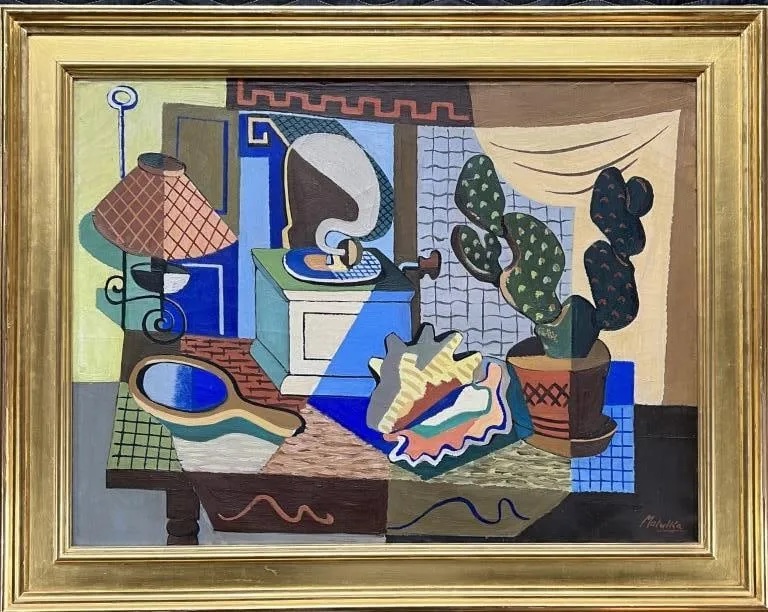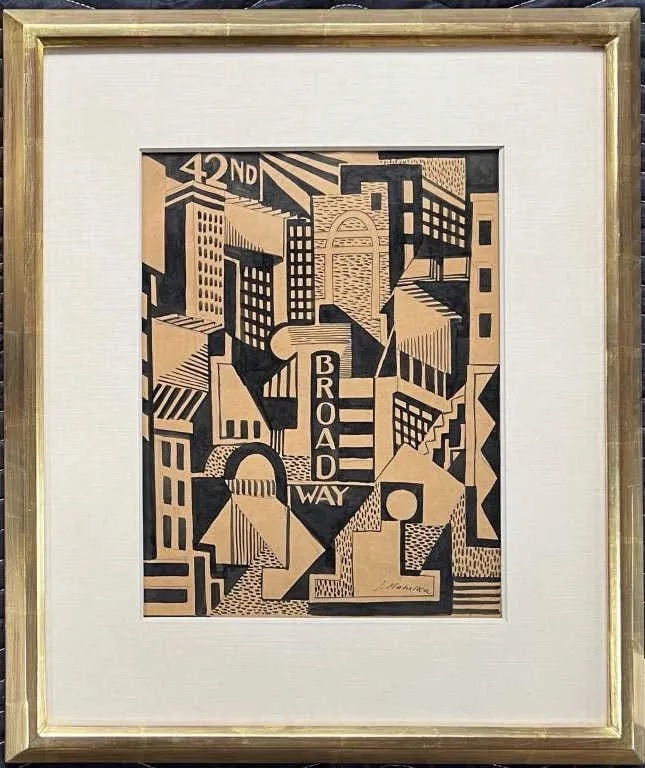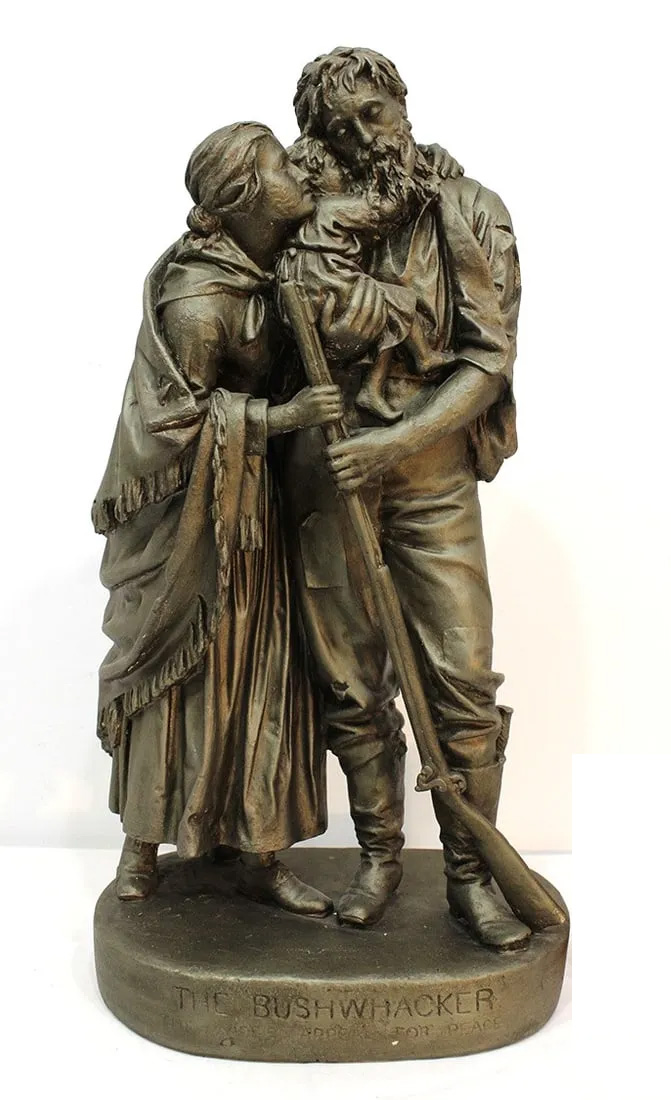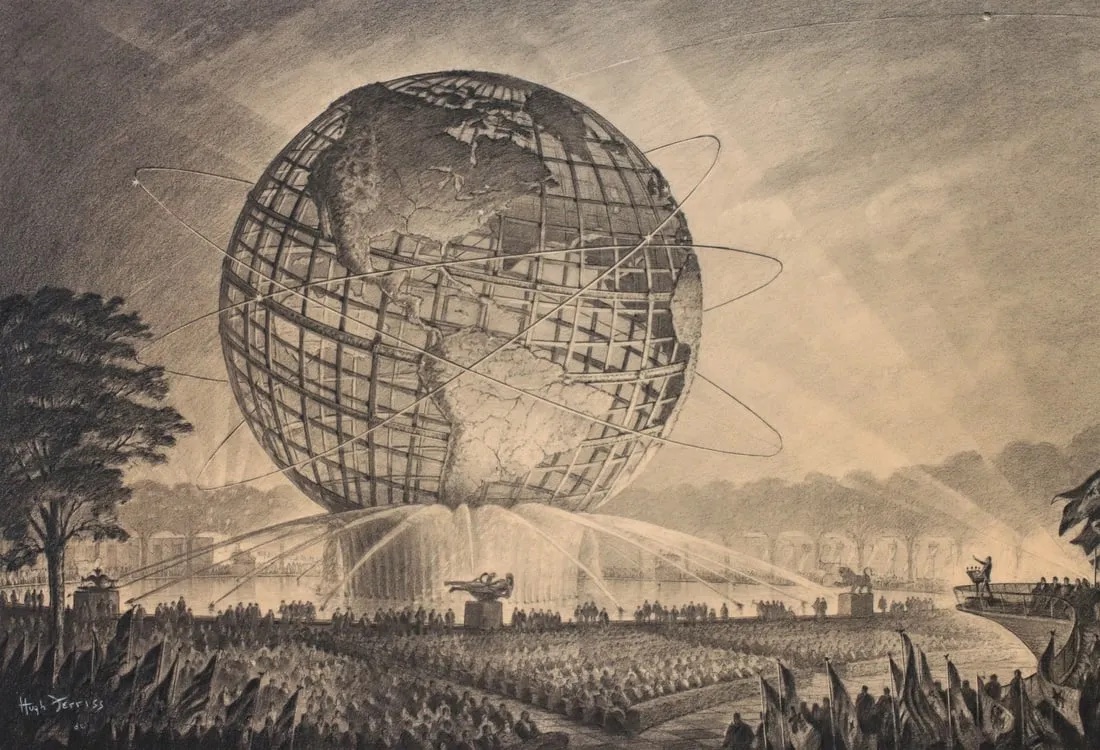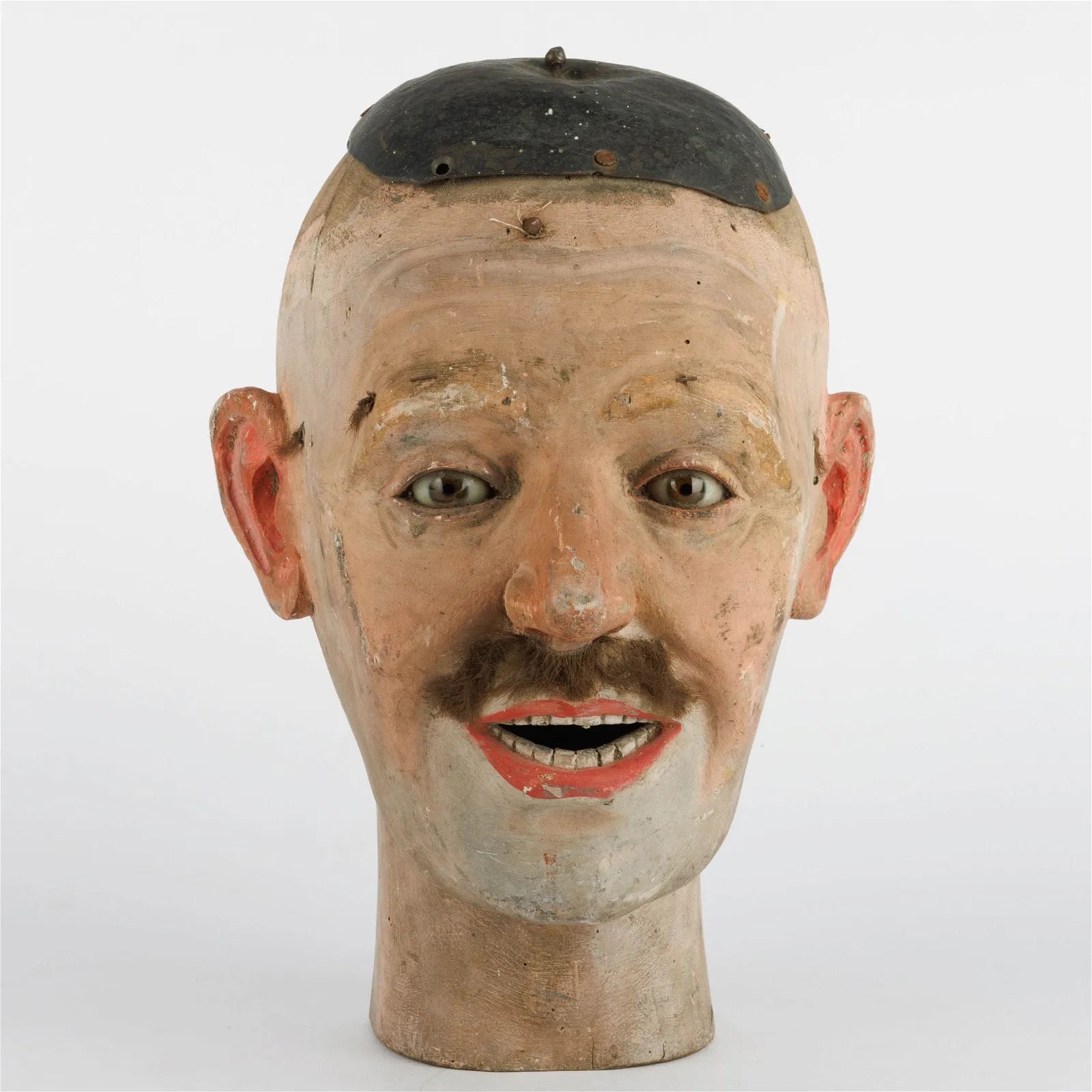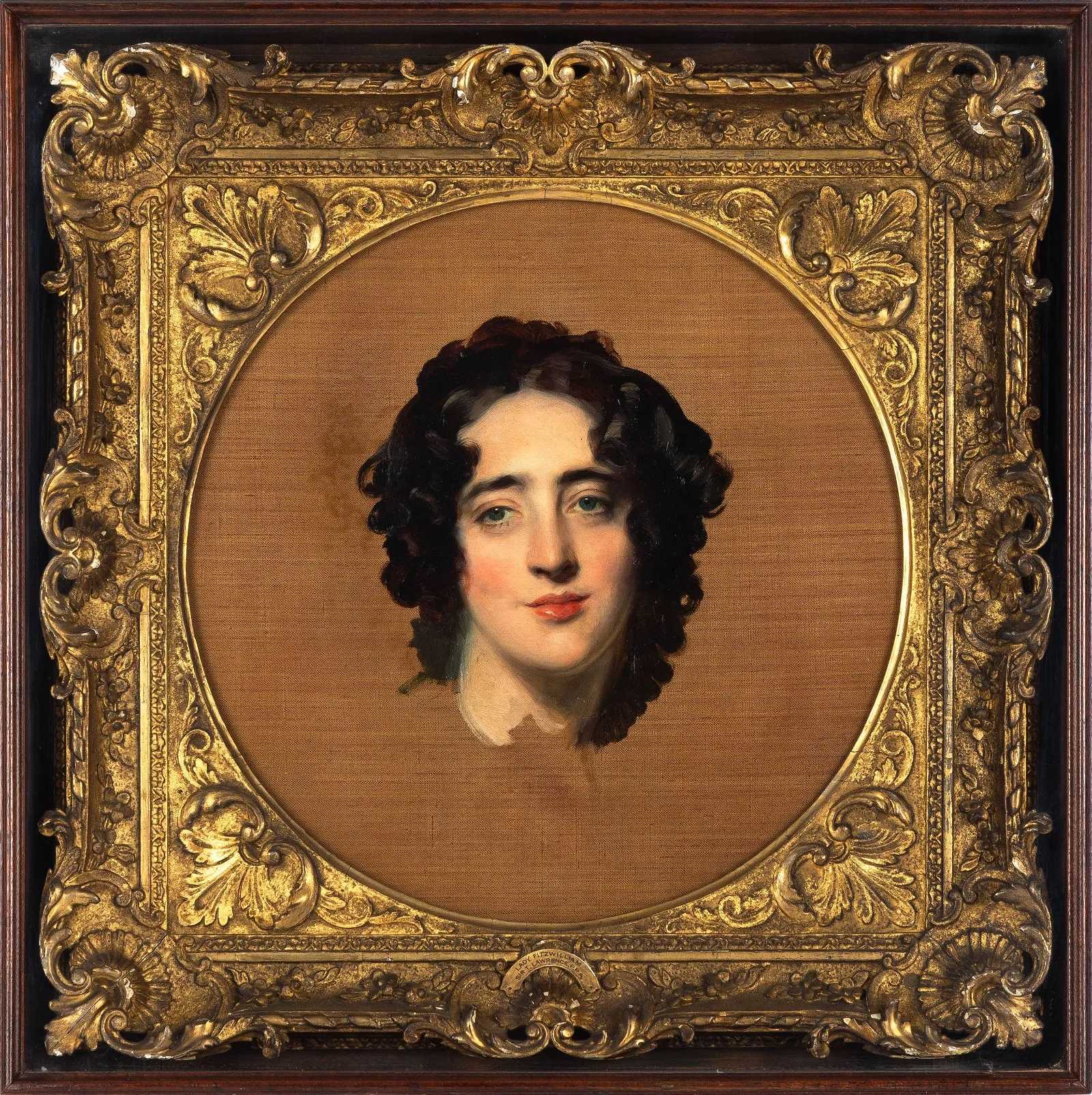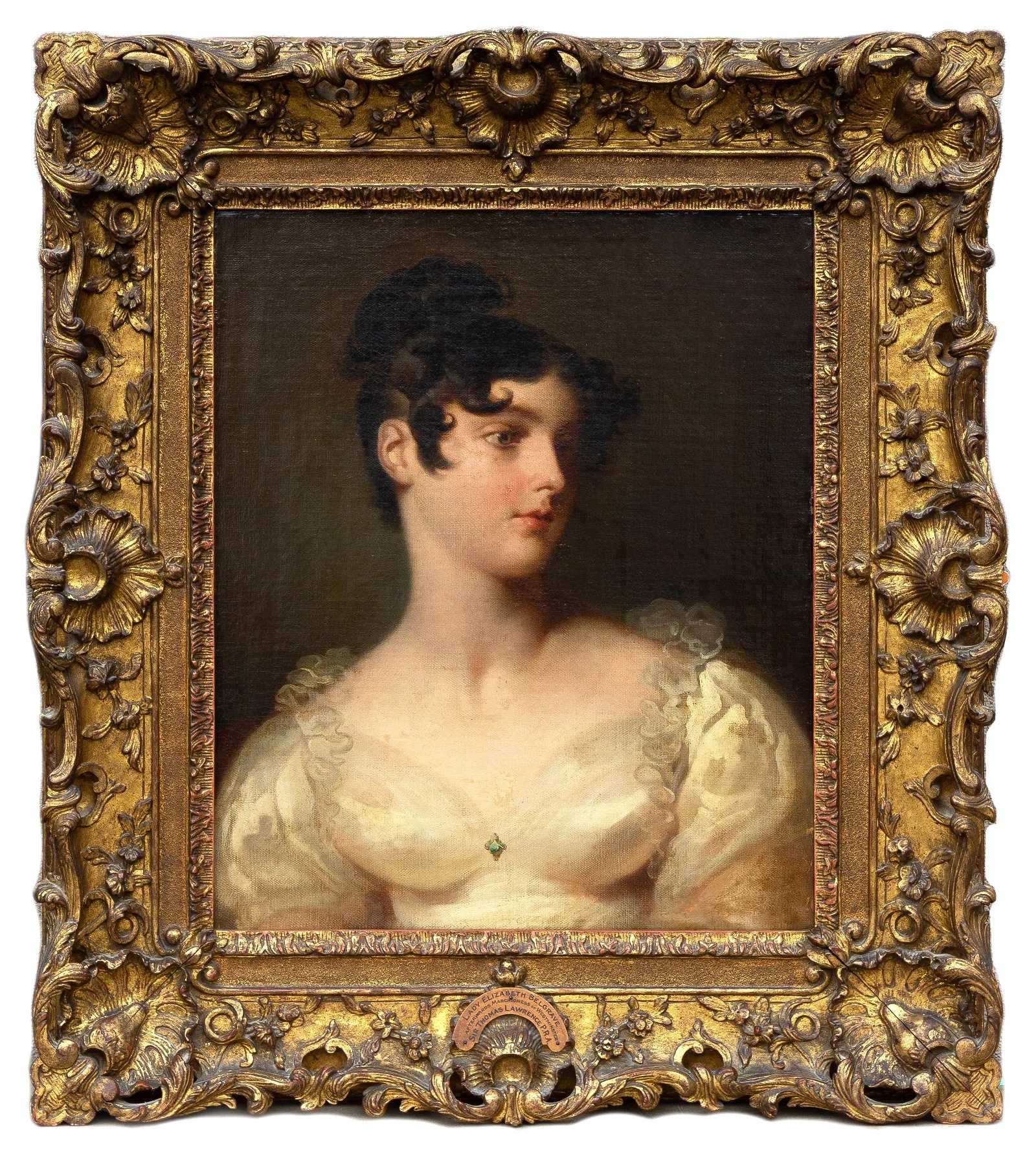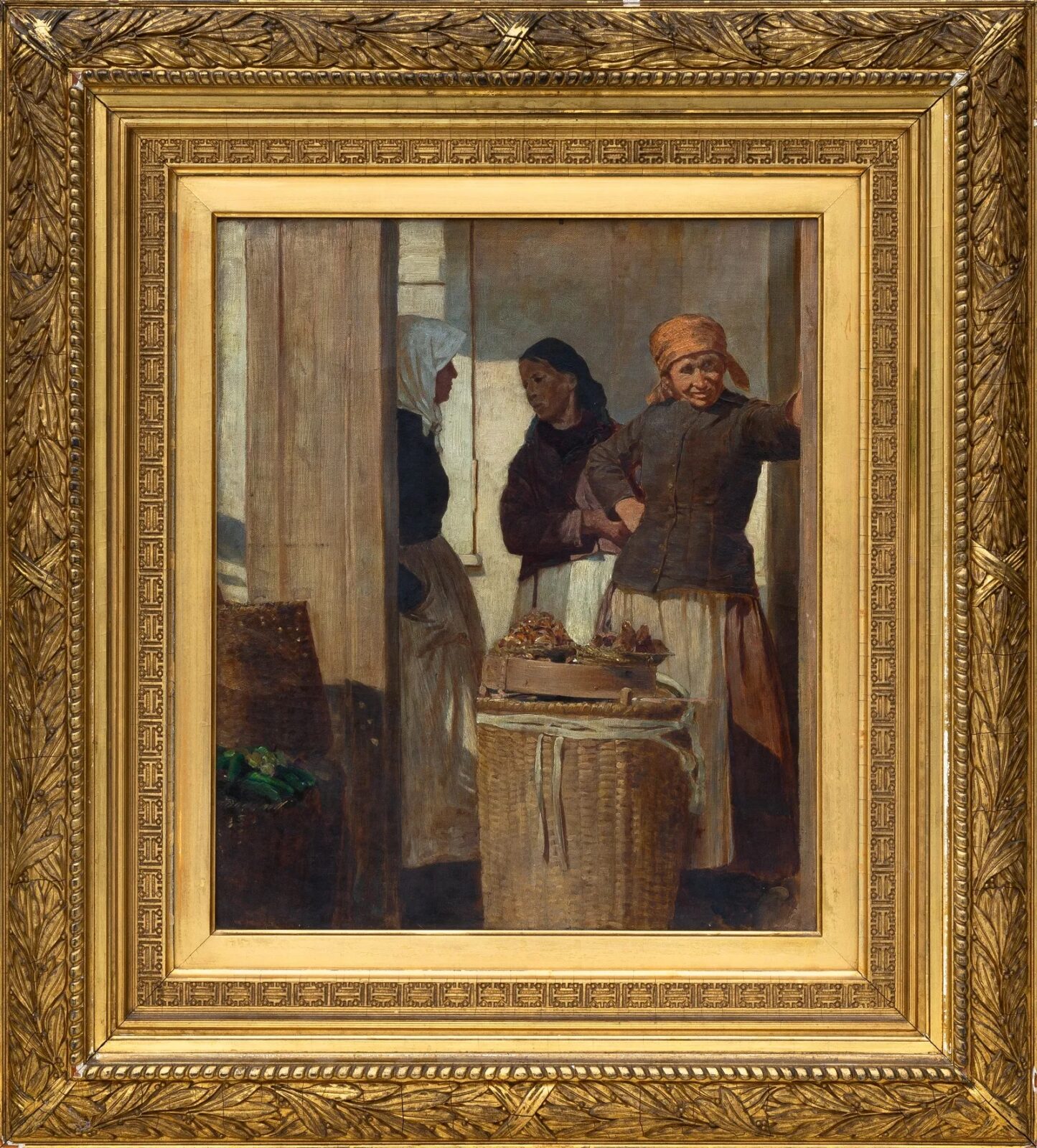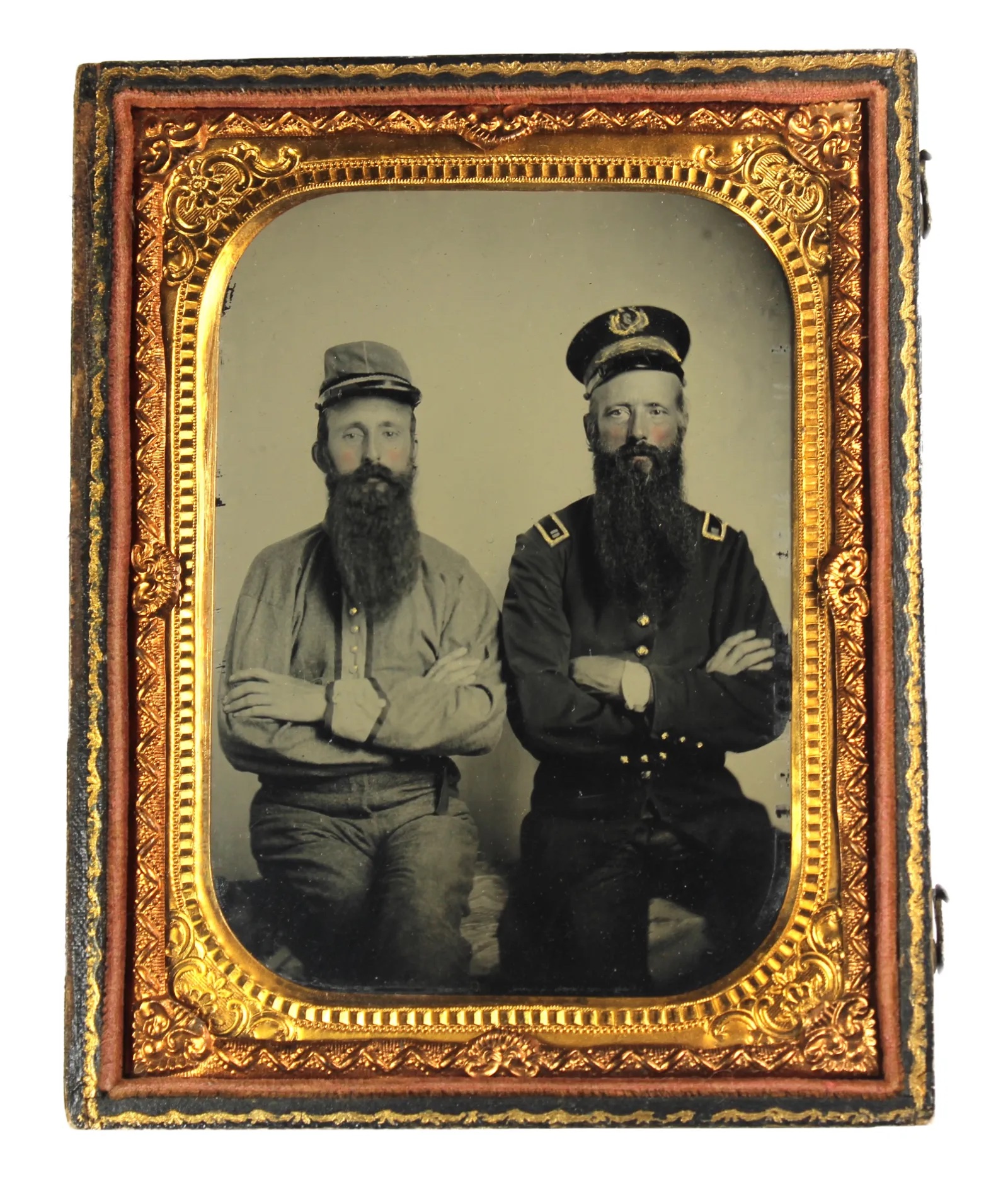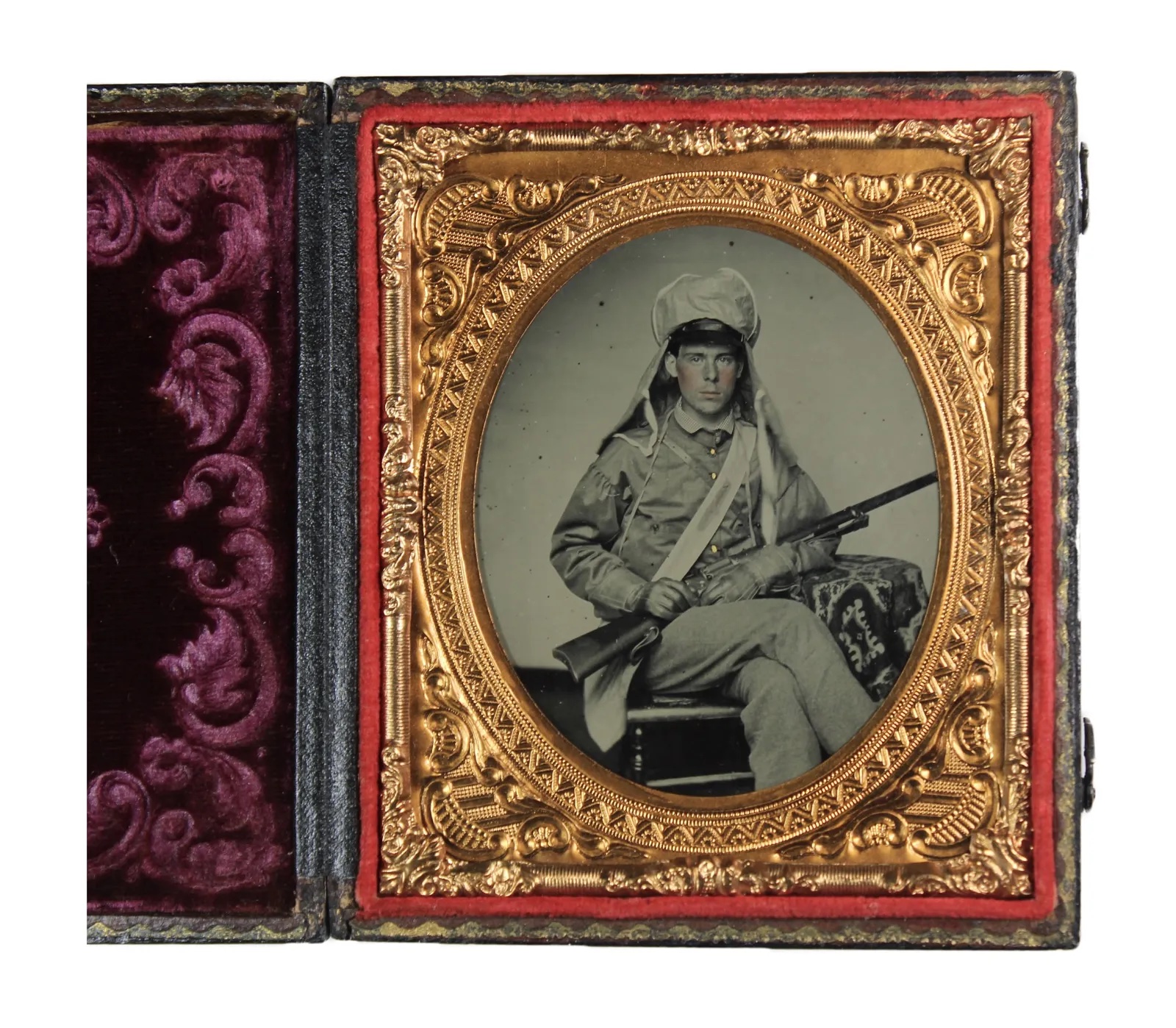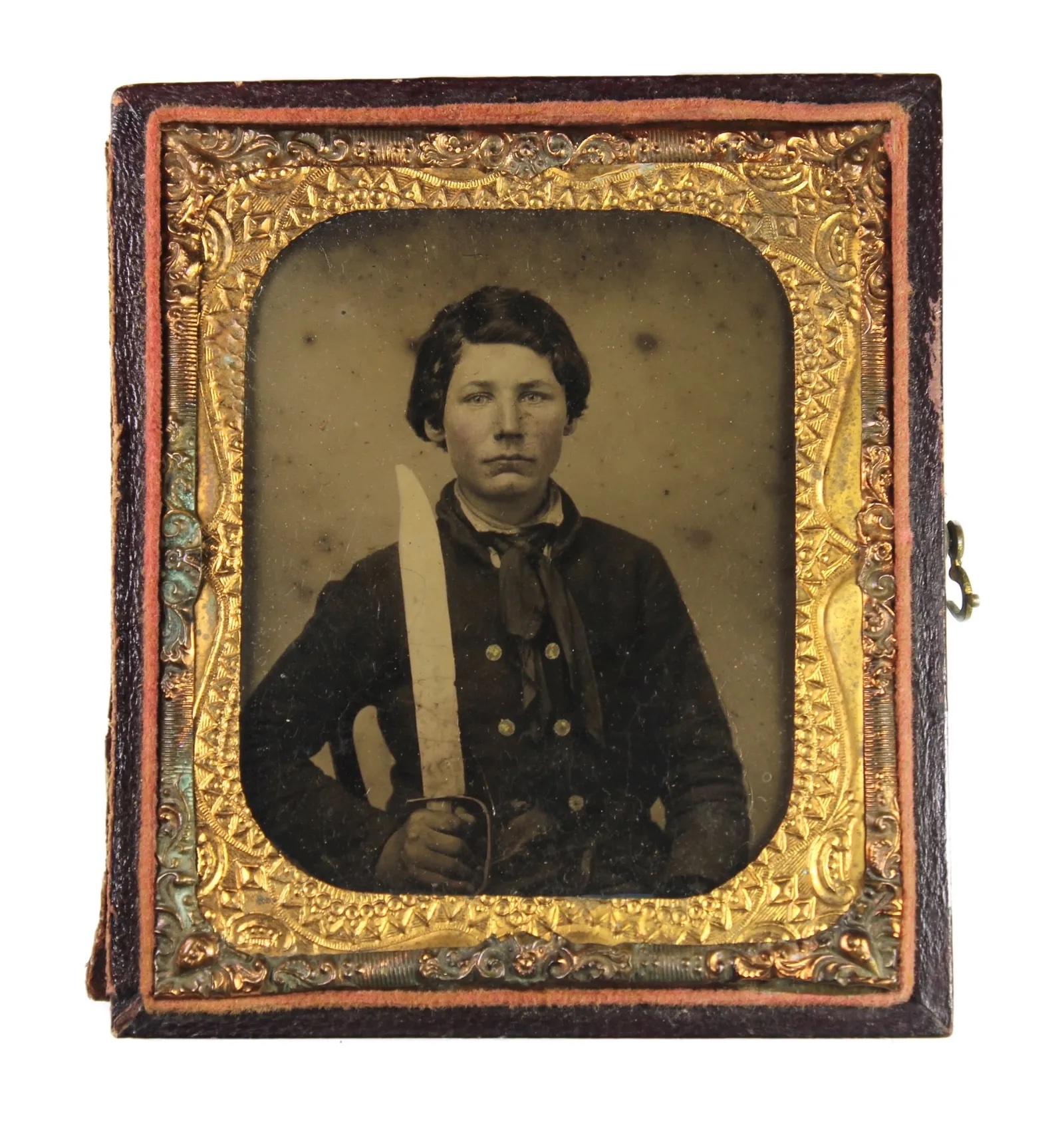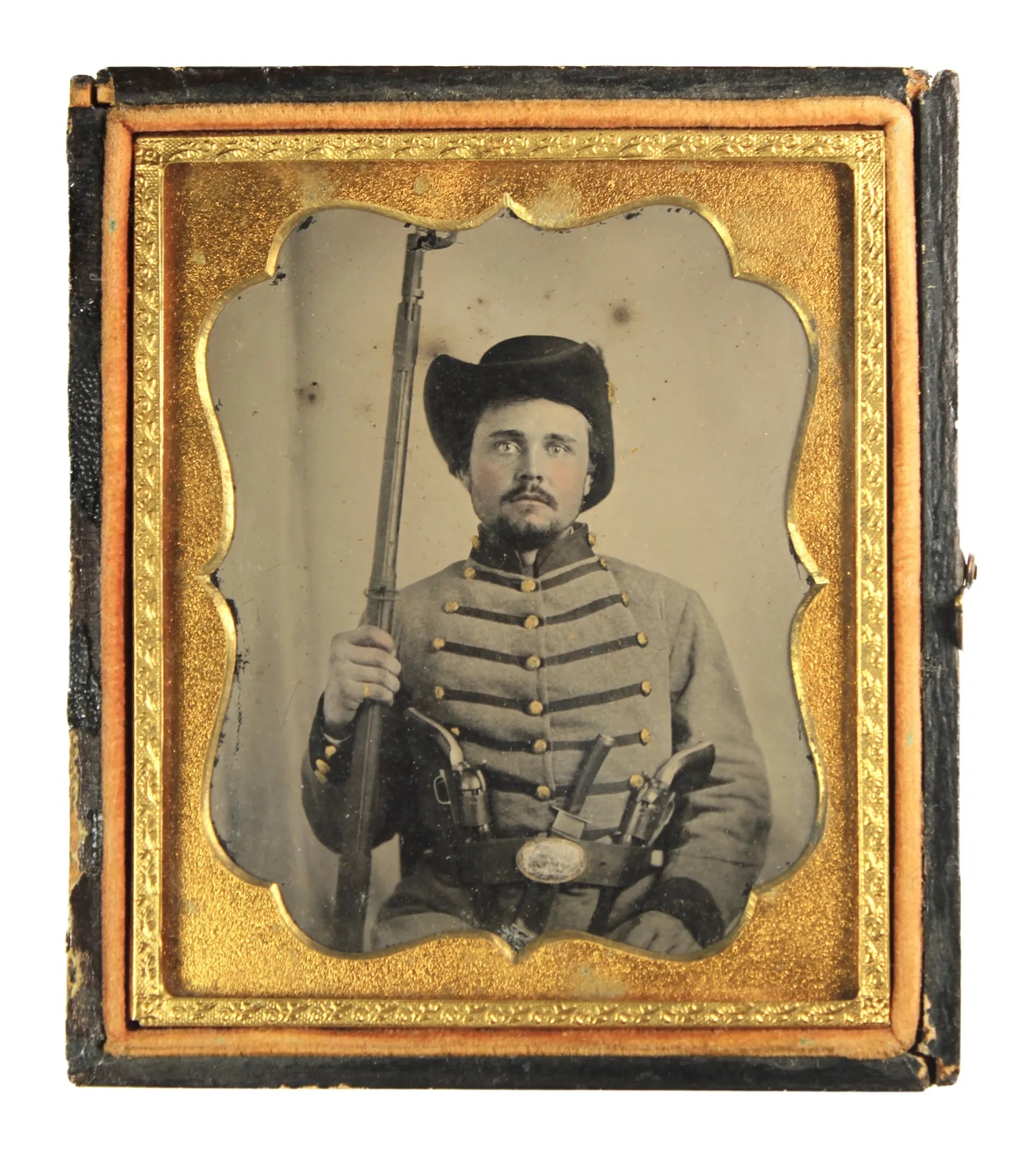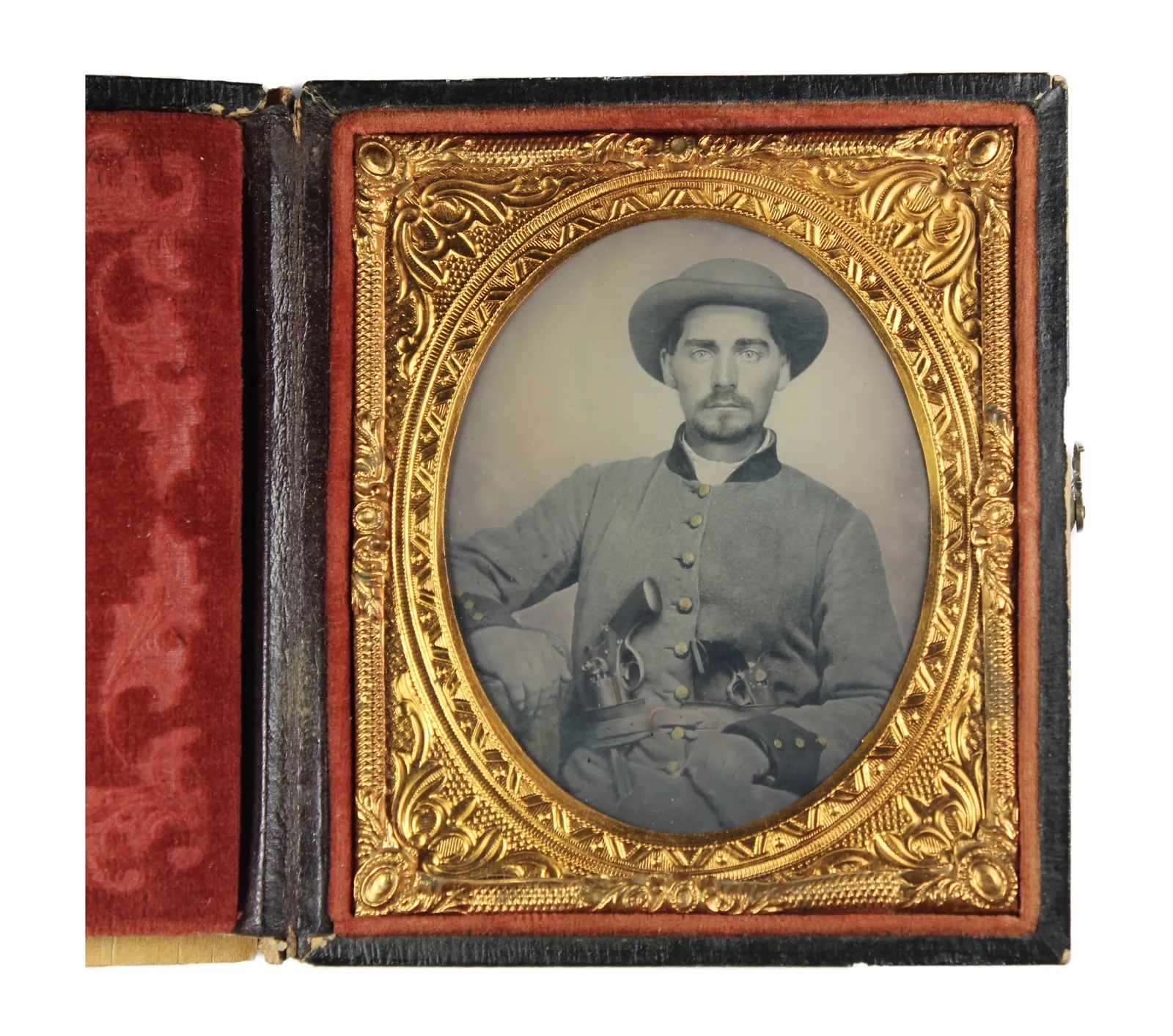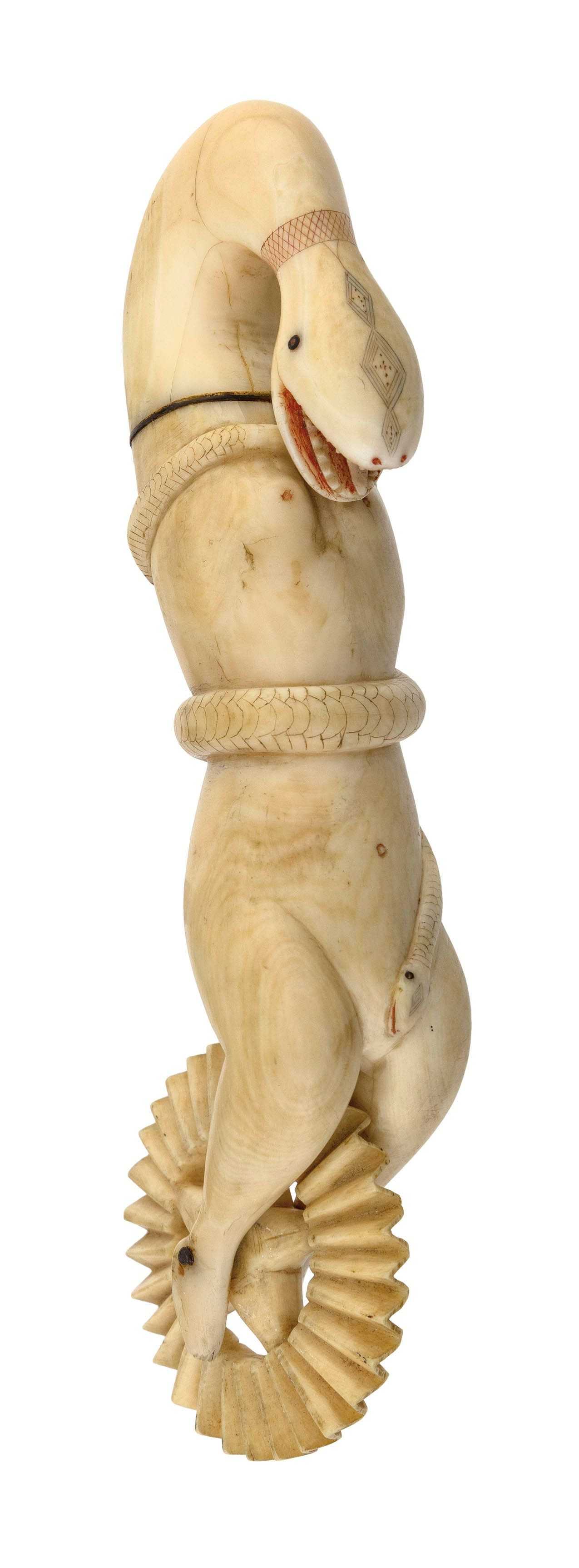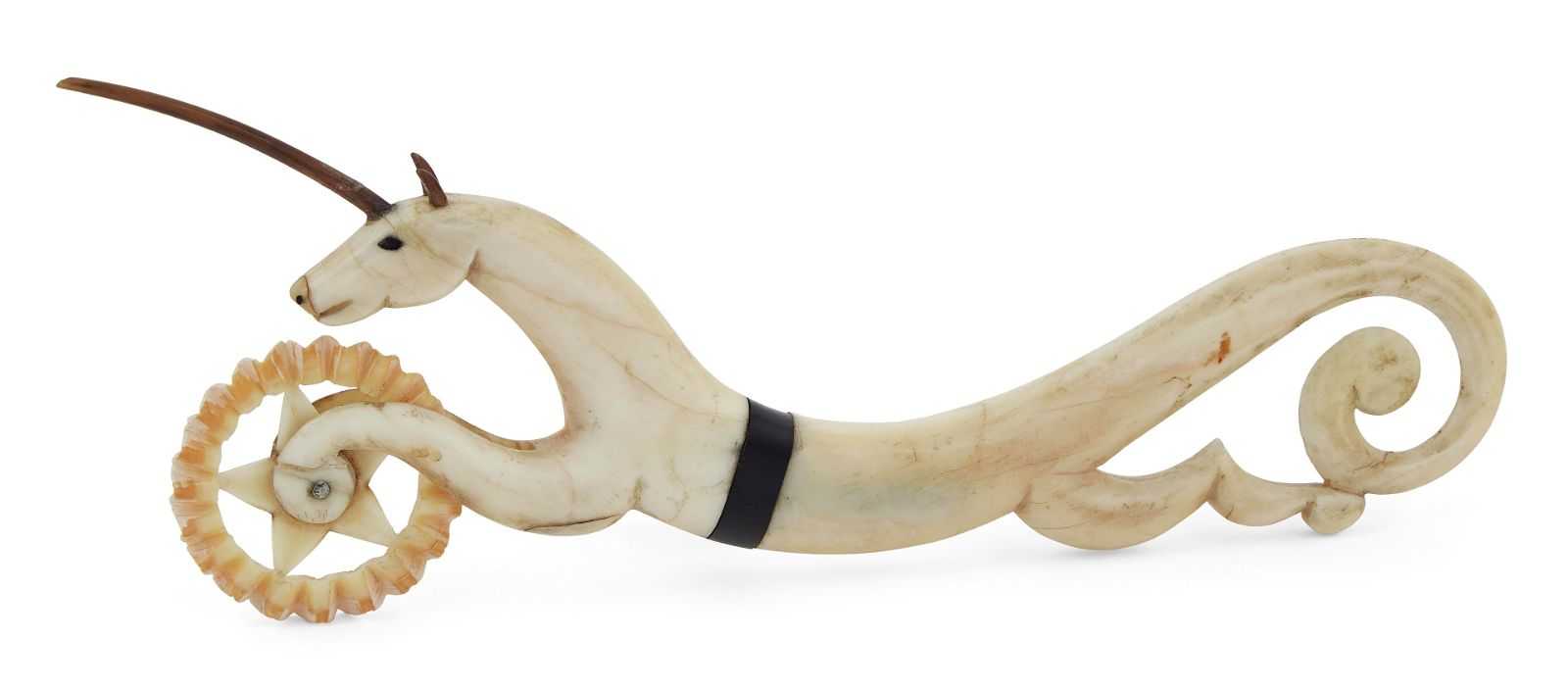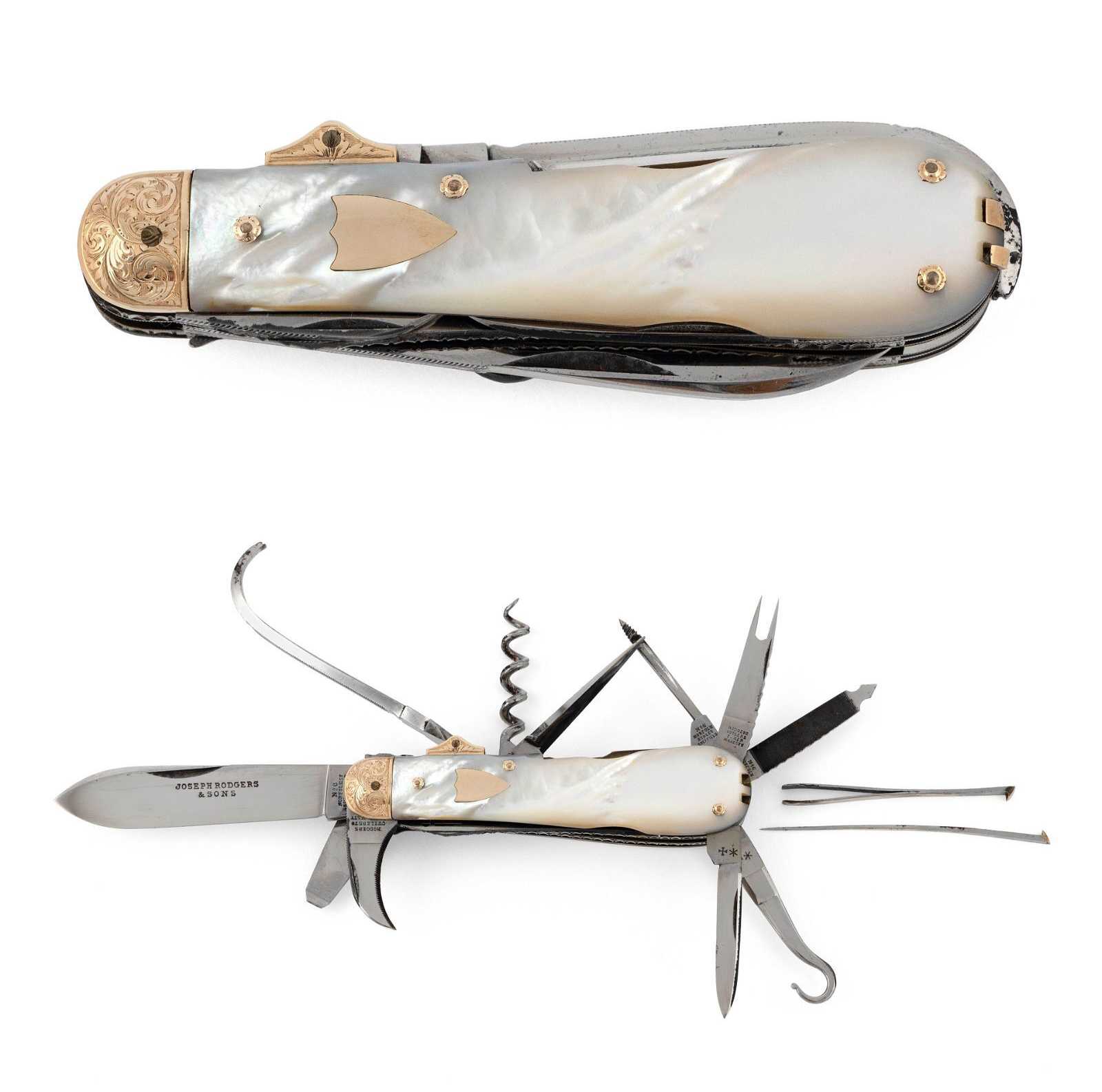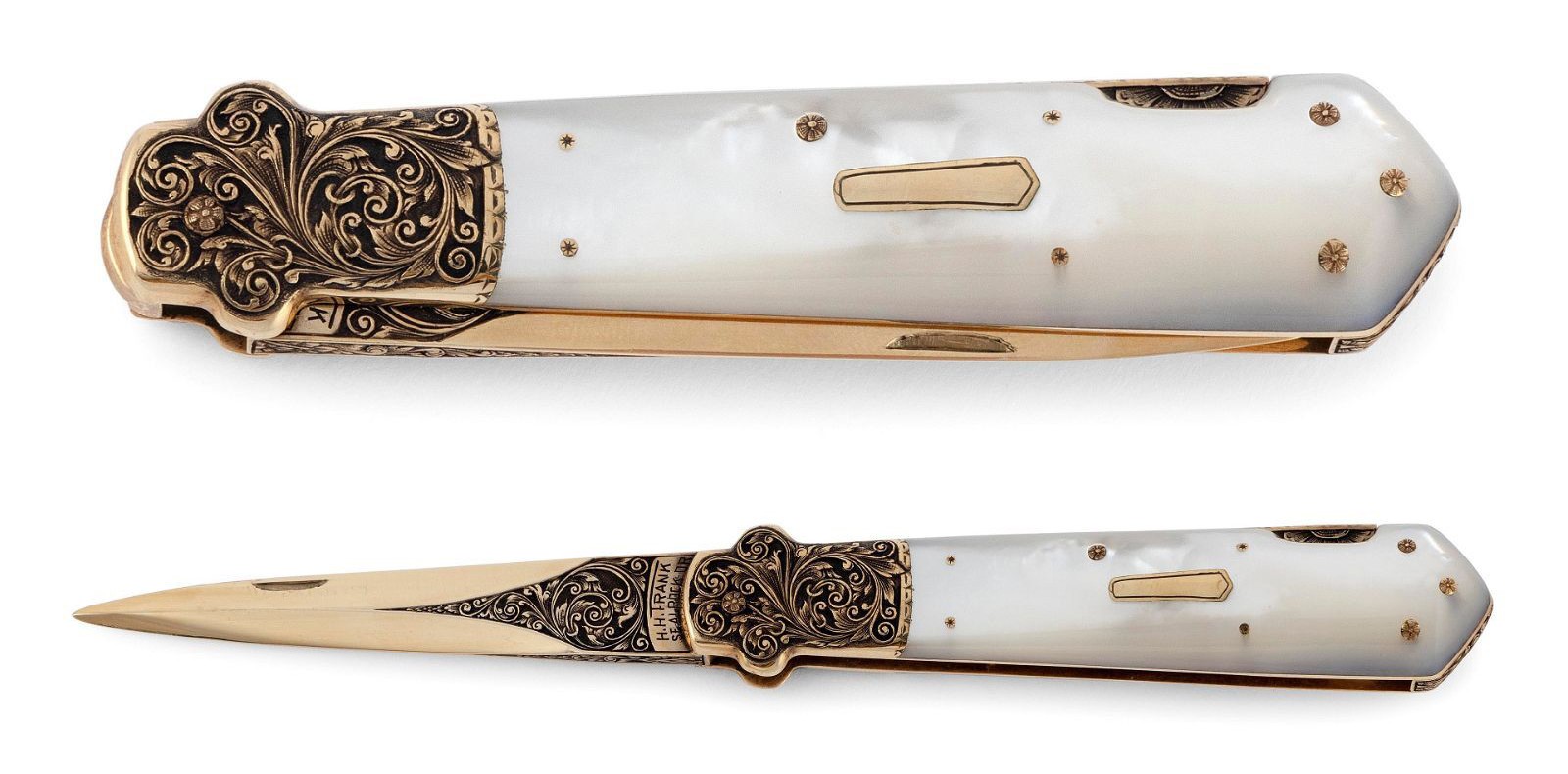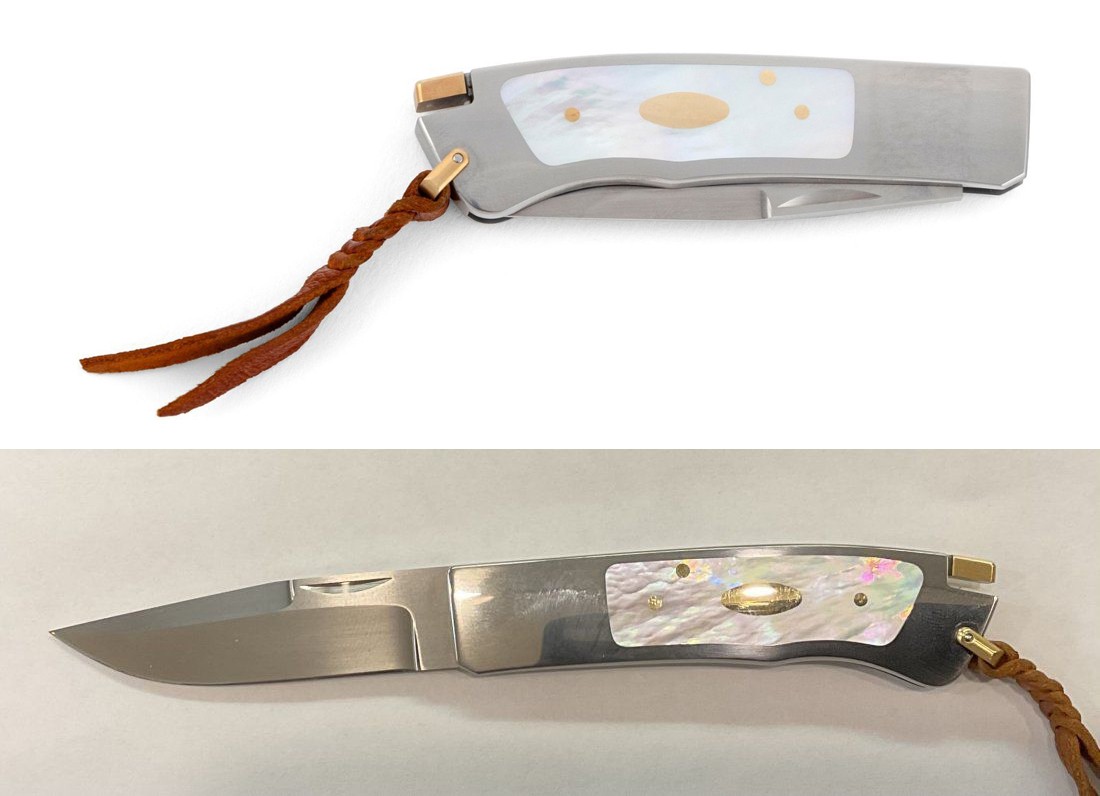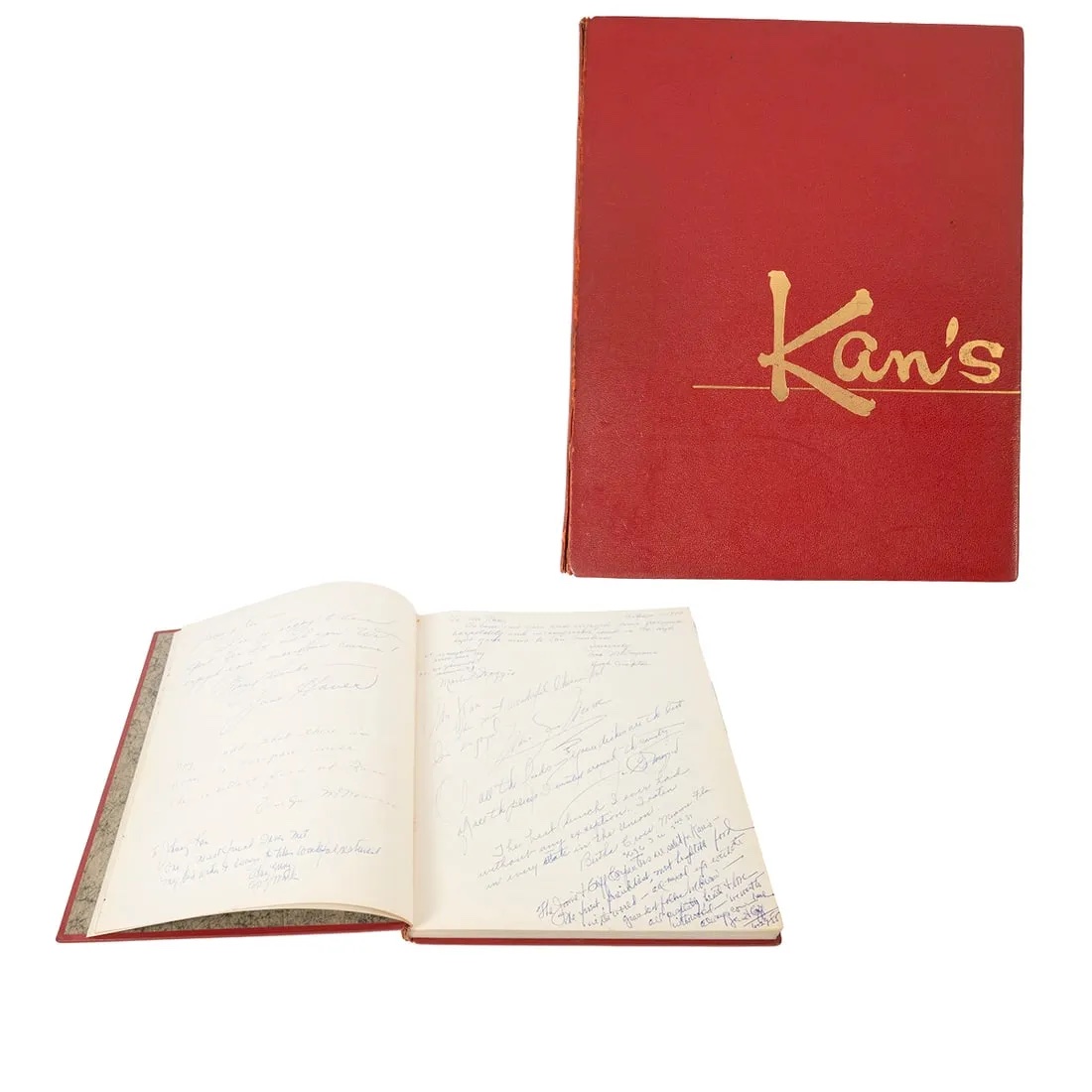Tiffany & Co. Aesthetic Movement Pitcher, $41,920
CHICAGO – The Aesthetic Movement lived by the phrase ‘art for art’s sake.’ Its adherents rebelled against the more functional thinking of the Victorian era, instead opting to make everyday things as beautiful as possible. The trend flourished in the 1870s and 1880s, and its influences were felt everywhere, including in the products emerging from the New York studios of Tiffany & Co.
This Tiffany pitcher is dated to around 1885 and features all the hallmarks of the Aesthetic Movement. Made from handwrought sterling silver with gold and copper plating, it includes Japonesque natural motifs including a cricket, a beetle, and a broadleaf plantain. On the underside it is marked Tiffany & Co 6463 Makers 5027 Sterling Silver 925-1000 M 2090 4 1/4 Pts, with the engraved initial M. Its gross weight is 29.8 troy ounces.
Estimated by Toomey & Co. at $6,000-$8,000, the pitcher would go on to hammer for $32,000 and sell for a shiny $41,920 at its February 29 Great Estates sale.
Antique Bovet Pocket Watch Made for the Chinese Market, $38,400
ROSEMEAD, Calif. – Just as rich Europeans coveted Chinese porcelain and lacquer in the 18th and 19th century, so the Chinese were fascinated by Western horology. Many English and Swiss clocks and pocket watches were made specifically for the Far Eastern market. The colorful gem-set and enameled pocket watches made in the town of Fleurier in Switzerland by two companies, Bovet and Juvet, played a dominant role in the export trade to China after the 1820s. Edouard Bovet even went as far as naming his company Bo Wei, the Cantonese word for watch.
The example offered by Legend Artworks on March 8 was typical. The 56mm 18K gold case, pendant and bail set with half pearls, has a white enamel dial on one side and a polychrome enamel scene of a tiger hunt on the other. It opens to reveal a typical Fleurier ‘Chinese market’ duplex escapement, with all the components of the movement heavily engraved.
Although the auction house speculated that the watch may be more than 200 years old, it was probably made in the second half of the 19th century. It is signed both Bovet and with the Chinese characters for Bovet Fleurier.
The estimate was a broad $200-$10,000 but, as prices for these watches have risen sharply in the past two decades with renewed Chinese interest, there were a number of interested parties willing to push the price well above the top estimate. The hammer price was $30,000, and with buyer’s premium, it sold for $38,400.
Arturo Noci, ‘Man at Window,’ $32,000
GLEN COVE, N.Y. – Roland NY’s March 2024 Estates Sale, which took place on March 9, was a classic mix of art and furnishings from homes being decommissioned after the passing of their owners. Among the 927 lots was a framed oil on canvas that the house titled Man at Window. Signed by Arturo Noci (1874-1953) and dated 1917, the work is strikingly evocative, with the viewer’s perspective as a voyeur of a man lost in thought as he scans what could be the French or Italian countryside.
Born in Rome, Noci was evidently an active painter who, from a review of his works sold at auction, specialized in portraiture. He would move to New York in 1923 and would spend his final 30 years there, often creating portraits of wealthy clients who he had befriended.
With a modest estimate of $4,000-$6,000, Noci’s canvas was noted to have some flaking issues and craquelure throughout. Bidders were not deterred; after 40 raises, the winner finished off the competition with a $25,000 purchase ($32,000 with buyer’s premium).
Circa-1500 French or Flemish Boxwood ‘Love Token’ Comb, $12,100
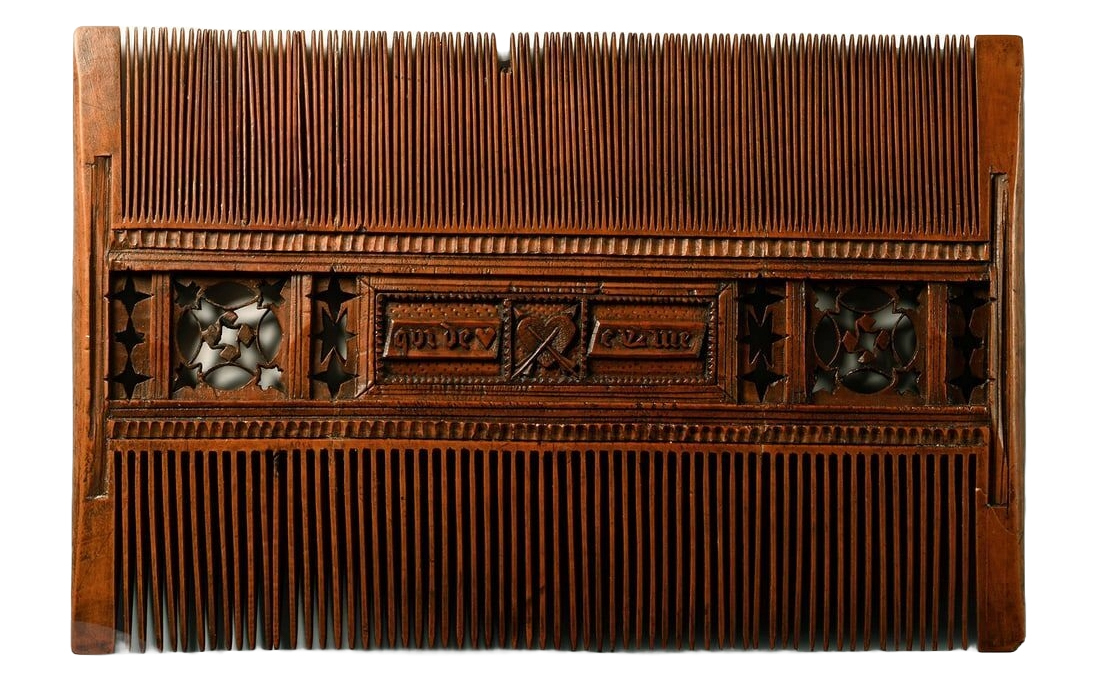
HARWICH, UK – The familiar heart-symbol – that today is ‘read’ as love – made its first appearance as a rebus in the late medieval era. This French or Flemish boxwood comb dating to circa 1490-1510 is meticulously carved with the inscription ‘de bon [coeur] donne’qui de bon [coeur] eyme’, translating to ‘He who loves from the heart, gives with a good heart’. It was probably given as a love token in much the same way as posy rings were gifts between lovers.
As they could touch the beloved directly, combs were considered intimate objects and were often included in bridal trousseaus. The tradition of using boxwood for combs is also an ancient one: the Latin word for boxwood, buxum, also signifies comb.
Such a well-preserved example is a rarity. A similar piece, dated circa 1500, is illustrated in Edward Pinto’s collecting bible Treen and Other Wooden Bygones, while another similarly inscribed front and back ‘A ma tres douce amie pour bie le done’ sold for $6,000 at Christie’s New York in June 2022.
This example, formerly in an American collection, was consigned by a Suffolk, England vendor to the Antiquities sale at Timeline Auctions. Offered on the first day of the March 5-9 sales series, it was estimated at £1,000-£1,400 ($1,280-$1,790) but hammered for £7,000 and sold for £9,450 ($12,100) with buyer’s premium.
Benny Carter, Tall Case Clock, $2,625
GIBSONVILLE, N.C. – Benny Carter (1943-2014) came to the world of folk art like so many of his kind – an upheaval in his life caused him to begin to express himself through art. In Carter’s case, it took the form of painting everyday objects with his bright color palette and his Baptist- and Americana-infused metaphors.
The lifelong North Carolinian had been a supervisor at a metal product fabricator near his home, but a business downturn compelled a layoff, resulting in Carter losing his only job of 29 years. He took to painting, and, as he would often tell his admirers, “Buy art.” And buy it they did, making Carter a leading member of the outsider art movement.
This tall case clock appeared at Ledbetter Folk Art Auction on March 1. A lengthy battle between LiveAuctioneers bidders sent the $200-$400 estimate into the trash and resulted in an astounding $2,100 ($2,625 with buyer’s premium). The clock’s door features Carter’s high attention to fine details, and includes one of his favorite themes, the Statue of Liberty. She carries the phrase “come up and see me some time” against a New York City skyline backdrop.


